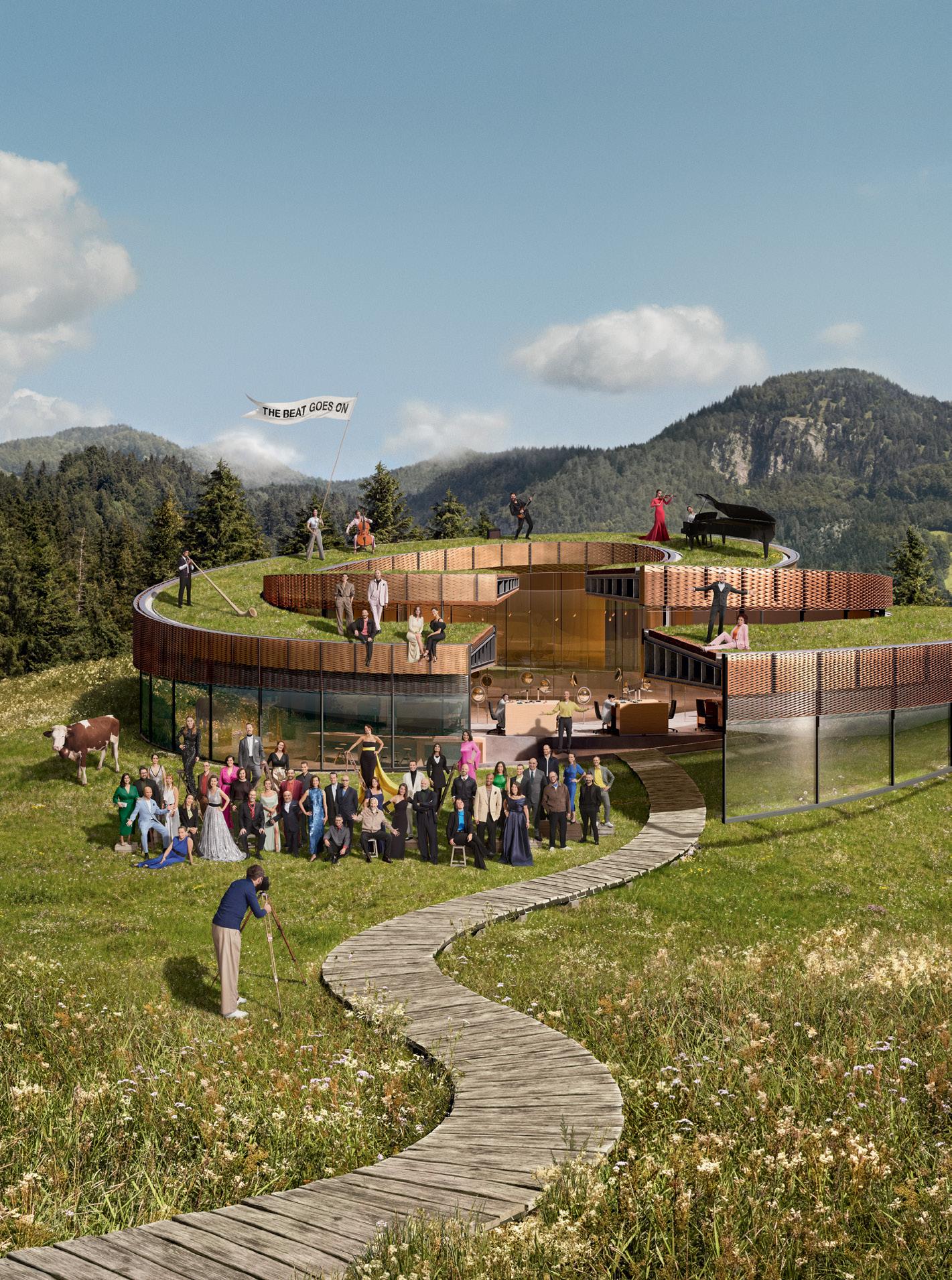

SAJWANI ABBAS
Founder and CEO of AHS PROPERTIES




Bechtel, Riyadh Metro
Using techniques such as a regenerative braking system, the metro is as innovative as it is sustainable
Building Beyond Luxury: The AHS Philosophy
Abbas Sajwani on vision, precision, and redefining what ultra-luxury means in Dubai and beyond
ANAX Developments
One of Dubai’s most dynamic luxury developers, has unveiled ELLE Residences
Passo by Beyond
Where Architecture, Nature and Emotion Converge into Soulful Waterfront Living
Palm Jebel Ali
Dubai’s Grand Return to the Sea
Sharjah Rising
The Quiet Power Behind the UAE’s Next Property Boom
The Algorithm of Opportunity How AI is Rewriting the Real Estate Story
Hong Kong Reawakens
After years of uncertainty, the city’s skyline is stirring again
From Towers to Townhouses
The GCC’s Love Affair with Community



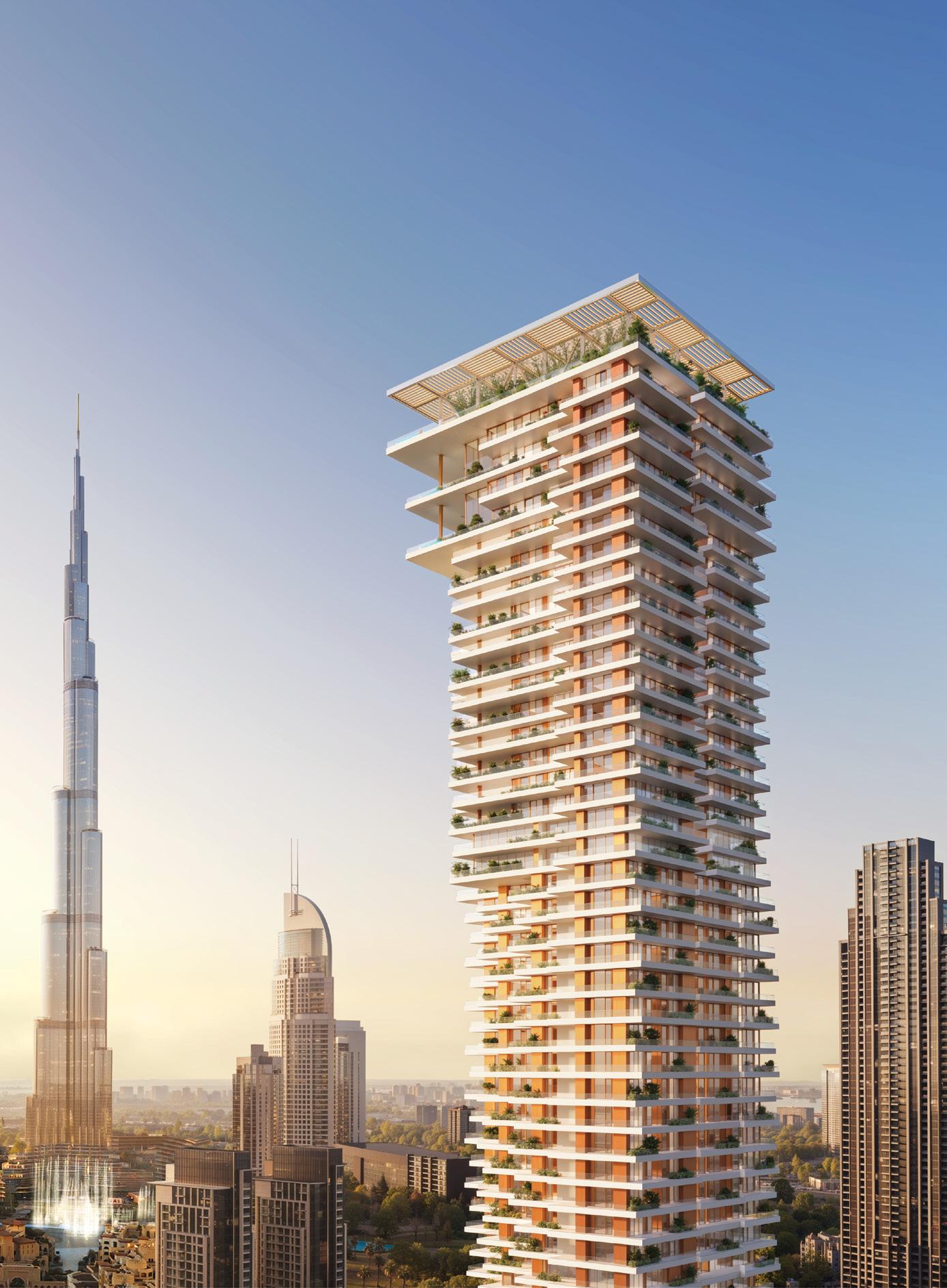

Leadership is not about being in charge. It is about taking care of those in your charge.
Simon Sinek
BECHTEL
RIYADH METRO

Using techniques such as a regenerative braking system that converts the trains’ kinetic energy into electricity that is returned to the supply network – the metro is as innovative as it is sustainable. There are solar panels on all three depots and three park-and-rides that generate enough clean electricity each day to power 15,000 homes.
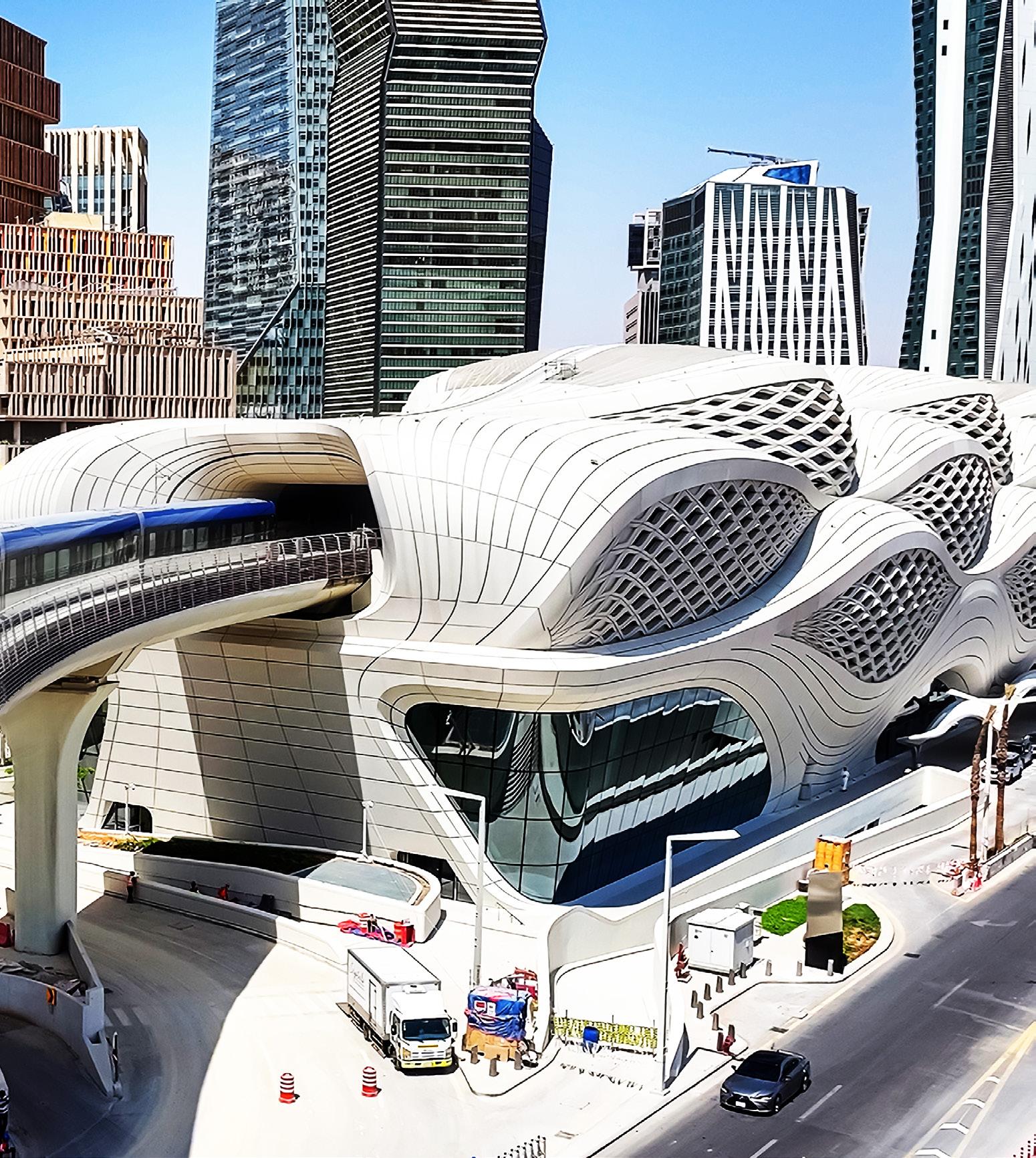

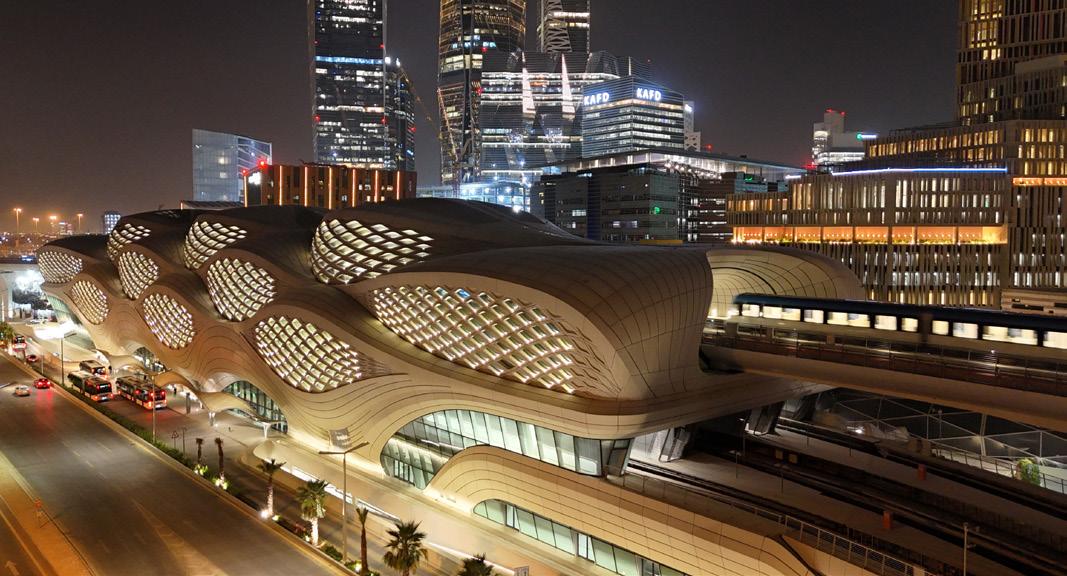

ARCHITECTURAL SURFACES
Enough to cover the entire footprint of London’s Gatwick airport
EARTHWORKS
7.5 times the volume of the Great Pyramid of Giza
7.3M
SQUARE METERS
18.6M
CUBIC METERS

Enough to fill 704 Olympic swimming pools
CONCRETE ELECTRICAL
1.1 times the diameter of the earth
FORMWORK
1.1 times the surface area of Central Park
2.2M 13M
40 times the weight of the Eiffel Tower
3.8M 370K



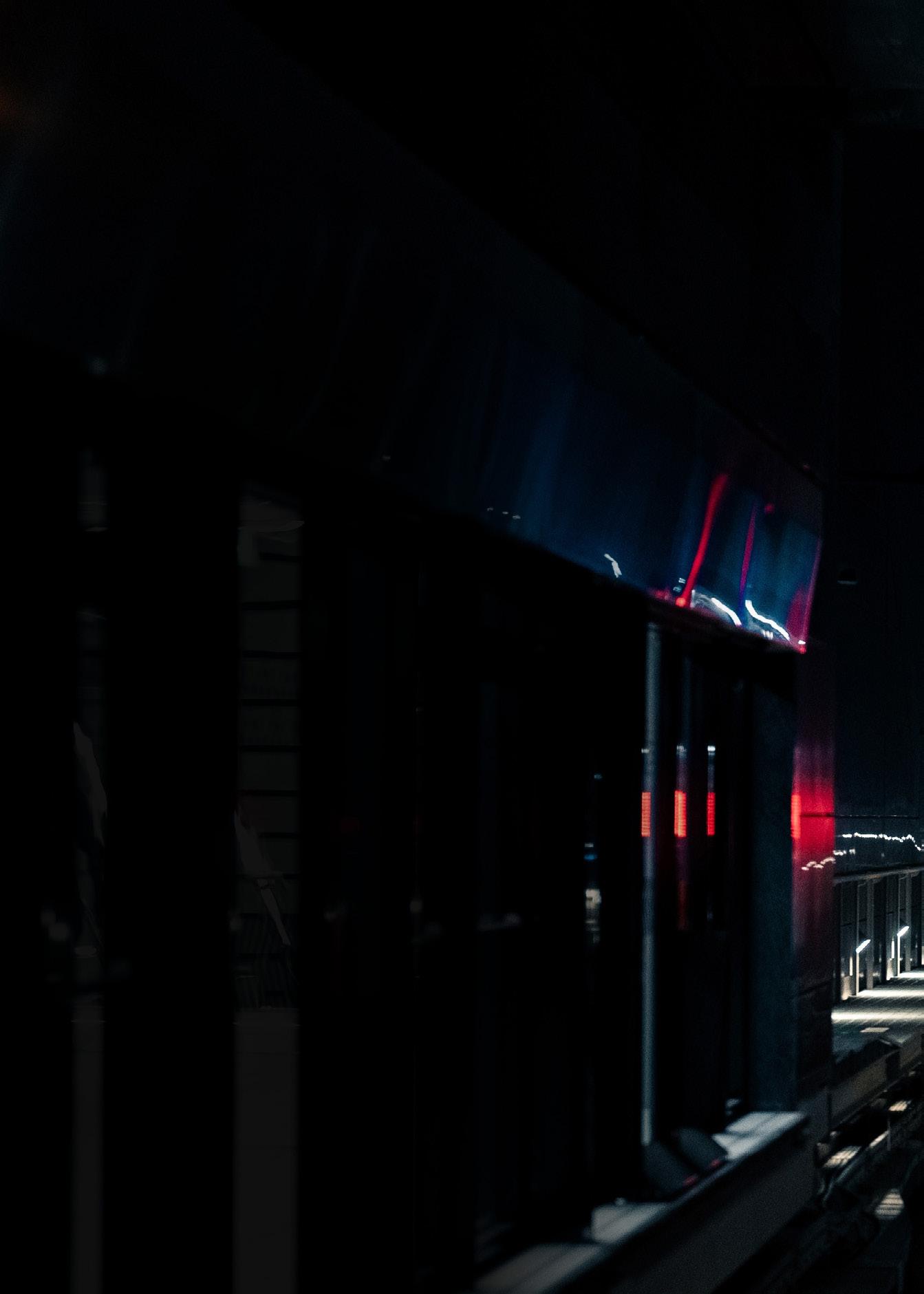
ROADWORKS
Enough to pave the area of Monaco

2 times heavier than the Statue of Liberty
STRUCTURAL STEEL TRACK
1.2 times the length of Hadrian’s Wall
PAVERS
Enough to cover Disneyland, California
SQUARE METERS 2.03M 53K 165 860K
SQUARE METERS TONS
KILOMETERS
The function of leadership is to produce more leaders, not more followers.
Ralph Nader


BUILDING BEYOND LUXURY
THE AHS PHILOSOPHY
Abbas Sajwani on vision, precision, and redefining what ultra-luxury means in Dubai and beyond
In a city that has redefined global standards of ambition, Abbas Sajwani has carved his own distinct space. As Founder and CEO of AHS Properties, he represents a new generation of leaders shaping the future of Dubai’s ultra-luxury real estate landscape — driven not by scale or spectacle, but by precision, clarity, and purpose.
At just 26, Sajwani’s rise has been rapid but far from impulsive. His approach is measured, deliberate, and deeply rooted in passion. Every project launched under the AHS banner carries a clear message: true luxury is not excess; it is excellence. It’s a philosophy that has transformed AHS Properties from a bold newcomer into one of Dubai’s most respected names in record time.
“I grew up close to the industry. From a very young age, I used to join my father in meetings and follow how projects were developed step by step. I was around seven years old when I began to understand what it means to create a home — how the idea starts, how the right team is chosen, and how every detail matters. These early experiences shaped the vision that later became AHS.

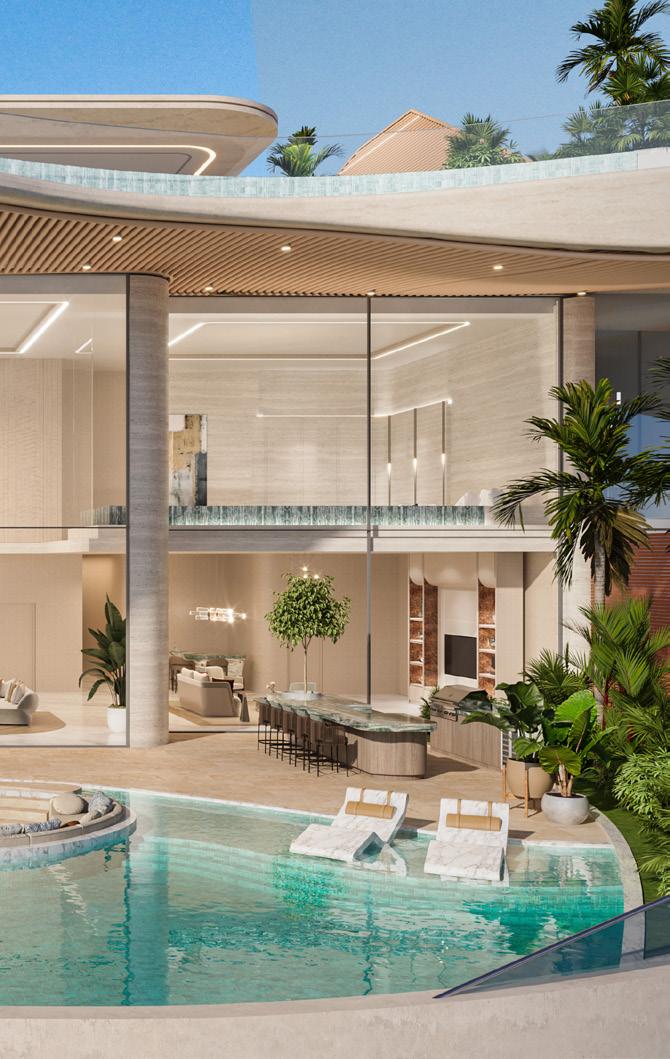
For Sajwani, real estate is not merely a business. “For me, real estate is about shaping how people live — not just building structures. Every project starts with a clear intention: to create something meaningful, lasting, and refined.”
When he founded AHS Properties in 2021, the decision wasn’t about launching a new company — it was, as he describes it, “a natural extension of my passion and vision.” Having observed Dubai’s property market up close, Sajwani recognised a clear gap at the top end of the spectrum. “There were many projects, but very few that truly reflected what I consider real luxury — the right balance of quality, detail, and design integrity,” he explains.
That conviction led to the birth of AHS Properties — a firm founded on the belief that ultra-luxury should mean something deeper than marble finishes or prime locations. It should embody excellence at every scale, from architecture to craftsmanship to experience.
“For me, founding AHS wasn’t about starting a new business,” he reflects. “It was about creating a benchmark for what ultra-luxury can truly represent.”
Launching a company in post-pandemic Dubai came with its challenges. “It was a time when the world was rethinking what ‘home’ really means,” Sajwani says.
“We had to adapt quickly and redefine luxury living in a way that felt more meaningful and human.” But AHS emerged strong. “With a clear vision and a team that truly believes in what we are building, we turned challenges into opportunities, shaping a distinctive identity within Dubai’s ultra-luxury market.”


Ask Sajwani to describe AHS Properties in his own words, and the response is immediate: “AHS is a commitment to consistent quality. We raise our standards continuously and evaluate every stage carefully — from the first idea to handover.” Every development is guided by one principle — to create projects that stand the test of time. “We move forward when the location, the team, and the concept align with our standard. Alignment is the foundation of our decisions.” To him, AHS isn’t
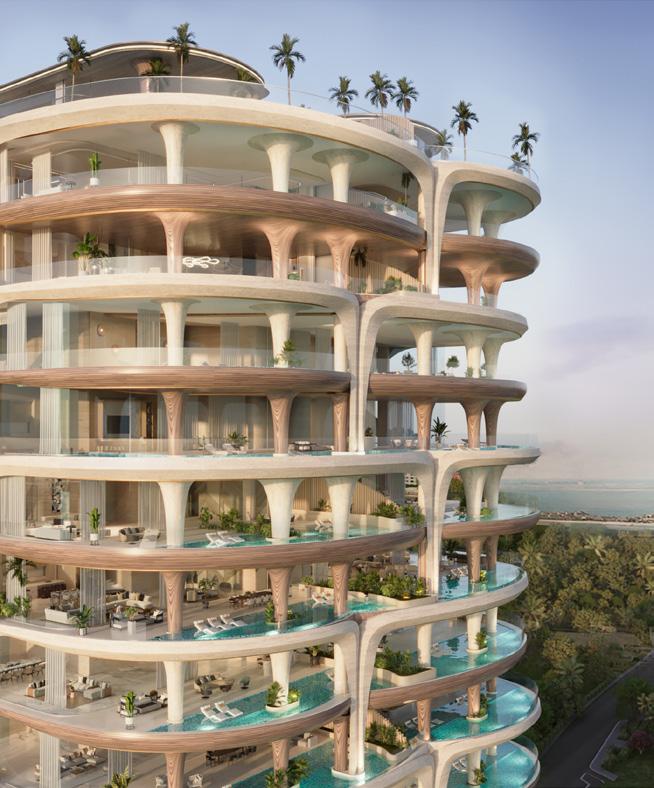
defined by pace or volume, but by clarity in direction. “We build at a considered pace. Depth and detail matter at every stage.” The company’s success has been anchored in that ethos.
AHS developments — notably One Canal, One Crescent, Casa Canal, and Casa AHS — have redefined the Dubai Water Canal as one of the most exclusive addresses in the city.
“What matters to us is how a person will feel living in that space. We start with the location, build the right team around it, and refine every detail until it feels balanced and natural. That’s what defines AHS.”
That philosophy has resonated strongly with investors and homeowners alike. Casa AHS, the company’s latest residential development, sold out during its pre-launch phase — a sign of the confidence the market places in the brand. “The response to Casa AHS confirmed something we’ve believed from the beginning: when the fundamentals are right — location, planning, privacy, and quality — the market recognizes it immediately. Casa AHS is a clear expression of our approach — a home shaped with balance, intention, and a sense of ease in how it is lived.”

“AHS is a commitment to
consistent quality.
We
raise our standards continuously and evaluate every stage carefully — from the first idea to handover.
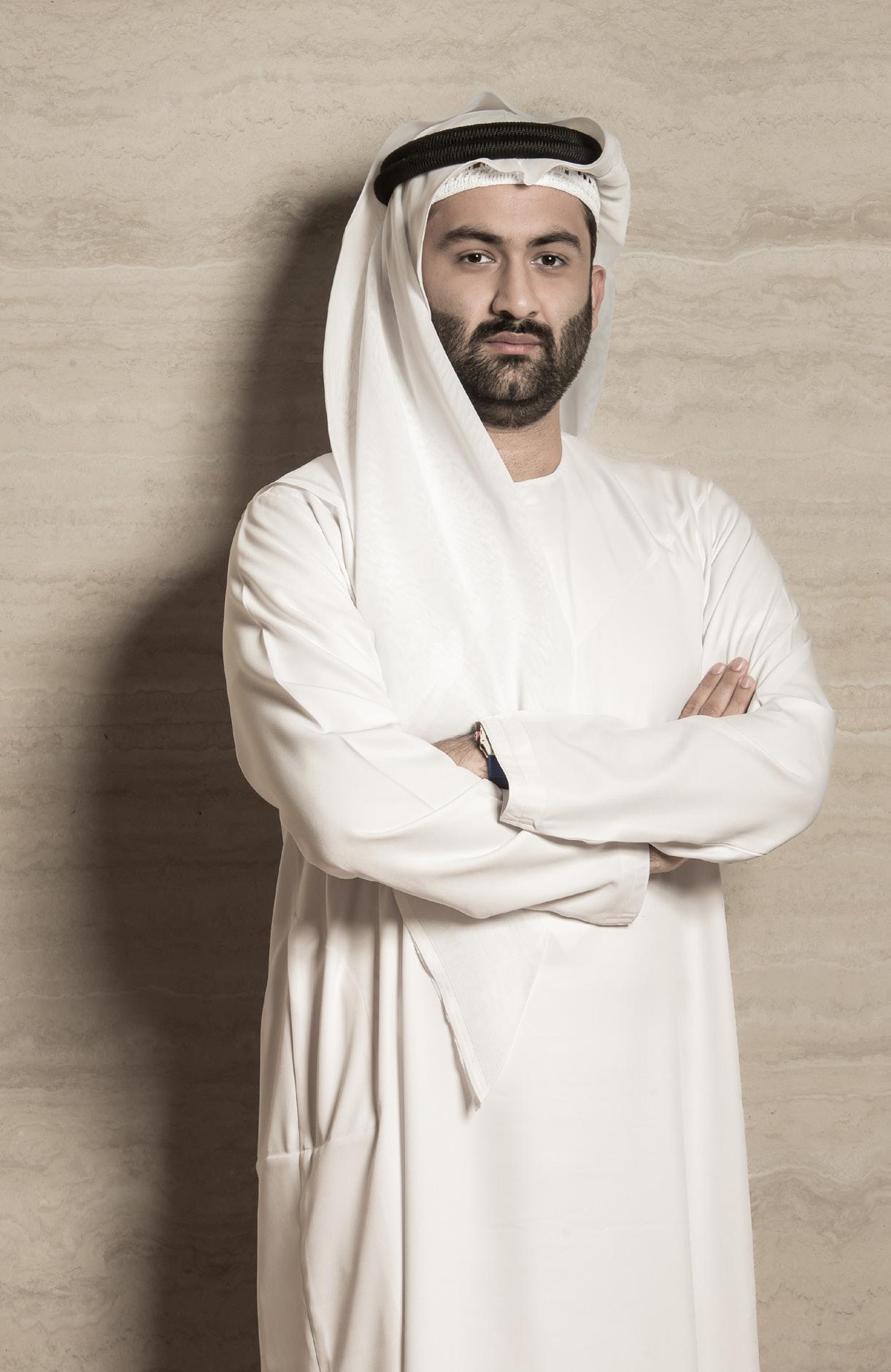
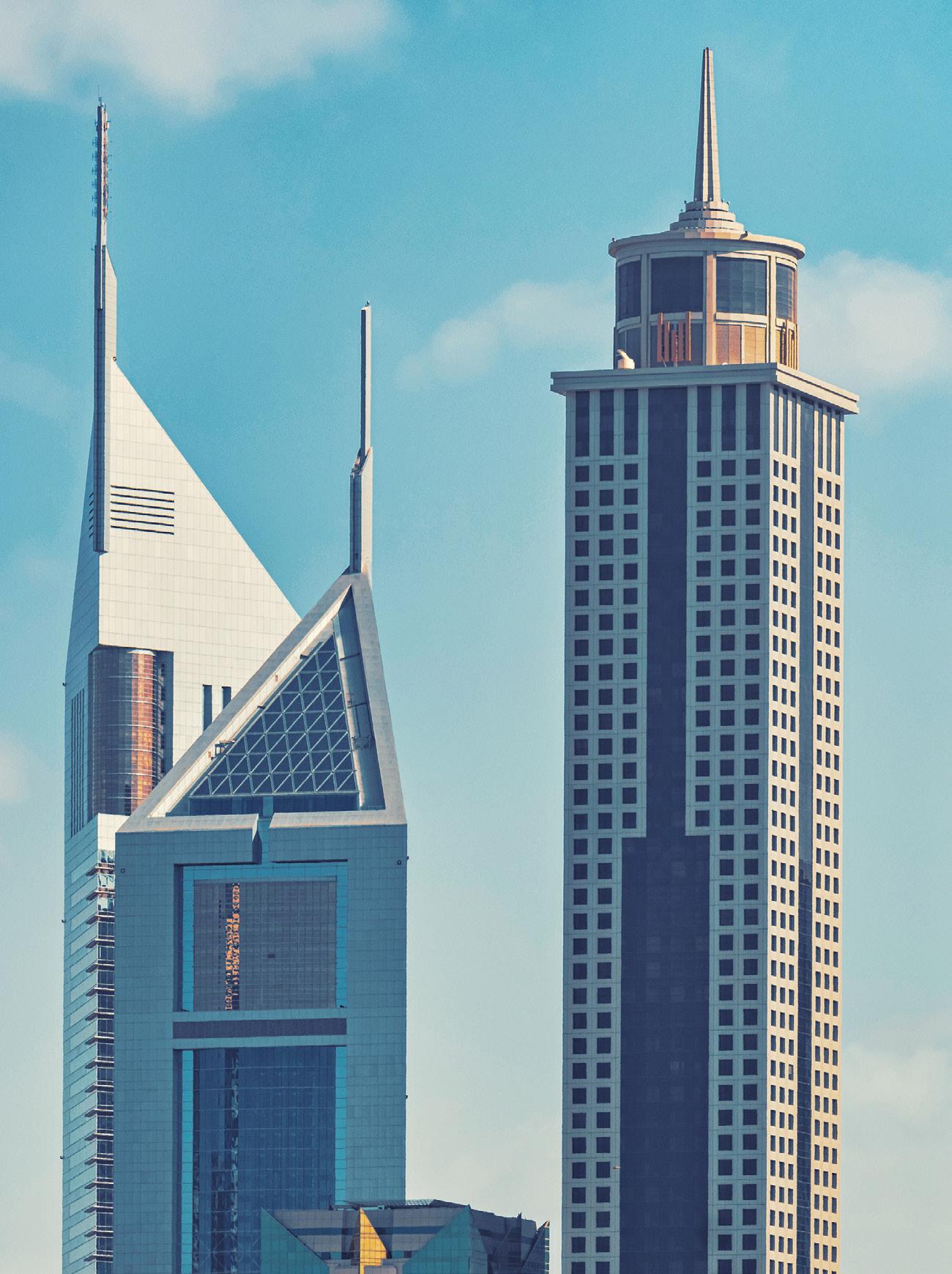

“We build places that hold value — not just today, but for the years ahead.
The company’s next major project, AHS Tower, marks an exciting evolution. “It’s our first move into the commercial space,” he says. “Just as we’ve redefined luxury in residential living, we now want to bring that same mindset to workplaces.”
The tower, rising prominently along Sheikh Zayed Road near DIFC and Downtown Dubai, sold over 70% of its units in prelaunch — a clear signal of market appetite for AHS’s approach.
“To me, AHS Tower isn’t just an expansion into a new segment,” he adds. “It’s a reaffirmation of our belief that true luxury is not defined by the type of space, but by the mindset behind it. It’s an extension of who we are and the beginning of a new chapter for the brand.”
Sajwani’s leadership style mirrors the discipline he expects from his projects — meticulous, transparent, and grounded in accountability. “Leadership begins with clarity and trust,” he says. “Everyone on the team should understand where we’re heading and why.” He describes himself as deeply involved in every stage of the process: “I like to stay close to every detail to understand how results are built and how we can keep improving them.”
He values creativity, but insists on structure. “I give space for new ideas, but within a clear framework that keeps us aligned,” he says. “Not every idea works, and that’s fine. What matters is that we learn fast and move forward stronger each time.”
His philosophy of leadership is simple but powerful: consistency over promises, action over instruction. “I lead by example,” he says. “My role is to set the tone, shape the vision, and ensure the team feels supported while being challenged to grow.”
Over time, Sajwani has learned that real success in Dubai’s fast-paced market is about endurance, not acceleration. “Consistency compounds — decision by decision, detail by detail,” he reflects. “In Dubai’s competitive market, disciplined work is what turns vision into value.”
At AHS, growth is not measured by volume, but by integrity. “We don’t measure success by numbers alone,” he says. “We measure it by how each project strengthens our identity and raises the standard of what we build.” Looking ahead, Sajwani’s ambitions for AHS are global, but grounded. “Our focus is not on expanding quickly, but on expanding wisely,” he explains. “Each project must reinforce who we are and the level of distinction we stand for.”
For now, Dubai remains the strategic heart of AHS Properties. “It’s a city that keeps evolving and setting global standards for innovation, quality, and lifestyle,” he says. “Within that landscape, our goal is to deliver developments that have a clear identity and lasting value. We build for the future — not just for today.”
“AHS reflects how I see luxury. It’s a company built on clarity, precision, and purpose.



He believes the next decade will see Dubai’s luxury market evolve beyond size and spectacle. “It’s no longer just about scale or location,” he notes. “It’s about how a project feels, how it functions, and the lifestyle it creates.
Dubai’s leadership continues to set global benchmarks for progress and resilience, and we’re proud to be part of that evolution.”
Sajwani’s goal is not to follow trends but to define them.
“That’s the direction we’re taking,” he says with quiet certainty. “We aim to stay aligned with Dubai’s evolution as one of the most inspiring cities in the world.”
Ask him about milestones, and Sajwani resists the temptation to single one out. “Every project carries personal meaning for me,” he says. “I’m deeply involved in each one, from the early concept to the smallest design decision.”
If pressed, he acknowledges One Canal as special — “because it marked the beginning of our philosophy and the first step in redefining what ultra-luxury could truly mean.” But for him, the journey is collective, not episodic. “Each project represents an evolution of our vision, executed with greater precision and depth each time.”

When it comes to defining success, Sajwani’s criteria are clear: “Sales are a result, not the goal. Success is when a project strengthens our identity and holds real value — to design, to the market, and to the people living it.”
That standard, over time, has become a kind of signature — minimalist, timeless, and meticulous. It’s visible in every element, from the sculptural forms of the architecture to the serenity of the interiors. AHS homes are designed to feel personal yet powerful, intimate yet monumental. “Every detail matters. The standard is in the discipline of how it’s made and how it endures.”



Legacy is a word that often arises in conversation with Abbas Sajwani — not as a goal, but as a guiding idea. “Legacy, to me, is about creating something that continues to inspire long after it’s built. True impact is in how people live with a space, and how it shapes their sense of identity and belonging.”
He doesn’t just want AHS to be known for its buildings. “I want it to be known for its philosophy,” he says. “For the values that guide every decision we make. If years from now our work still reflects that vision and continues to inspire, that will be the legacy I’m proud to leave behind.”
That long-term mindset also defines his approach to mentorship and entrepreneurship. When asked what advice he would give to young business leaders, his answer is thoughtful. “Have a clear vision. Know why you’re building and where you’re heading. Growth takes time. Be patient, learn quickly, stay open to improvement — and keep moving.”
He pauses before adding, “You might make mistakes along the way — sometimes the path isn’t perfect, but the idea is. What matters is that you stay patient, learn quickly, and keep improving. Every challenge teaches you something if you stay open to learning. And above all, don’t give up. Persistence is what separates those who dream from those who achieve.”
Under Sajwani’s leadership, AHS has become a brand synonymous with ultra luxury homes. It is redefining the meaning of luxury in Dubai. It has been a four-year journey since the company was launched, but few could argue that AHS is already firmly making its mark as a major player in the real estate market.
“We build at our own pace — guided by clarity and precision,” Sajwani says with quiet conviction. “For us, value is something that endures over time.”
As AHS Tower begins to rise and new developments take shape, it’s clear that AHS Properties is building more than structures — it’s building a statement. A statement about vision, precision, and purpose. About redefining what ultra-luxury means for a new era.
And in that story, Abbas Sajwani is not just a developer — he is an architect of ideas, a craftsman of philosophy, and a young leader who believes that true luxury, like true success, is timeless.
“What stays with people is how a place makes them feel.

A good leader takes a little more than his share of the blame, a little less than his share of the credit.
Arnold H. Glasow
ANAX DEVELOPMENTS ELLE RESIDENCES
ANAX Developments, one of Dubai’s most dynamic luxury developers, has unveiled ELLE Residences, its latest landmark project redefining branded living in the region. This stunning project marks a new era of branded residences in the heart of Dubai Islands. Following the success of its first residential tower in Miami, ELLE, owned by the Lagardère Group, has partnered with ANAX Developments to create its branded residences portfolio in the Middle East, for the very first time. This landmark collaboration combines ELLE’s global lifestyle ethos with ANAX’s deep understanding of Dubai’s evolving luxury market, creating a new flagship project that is set to become a cultural and architectural icon for the region.
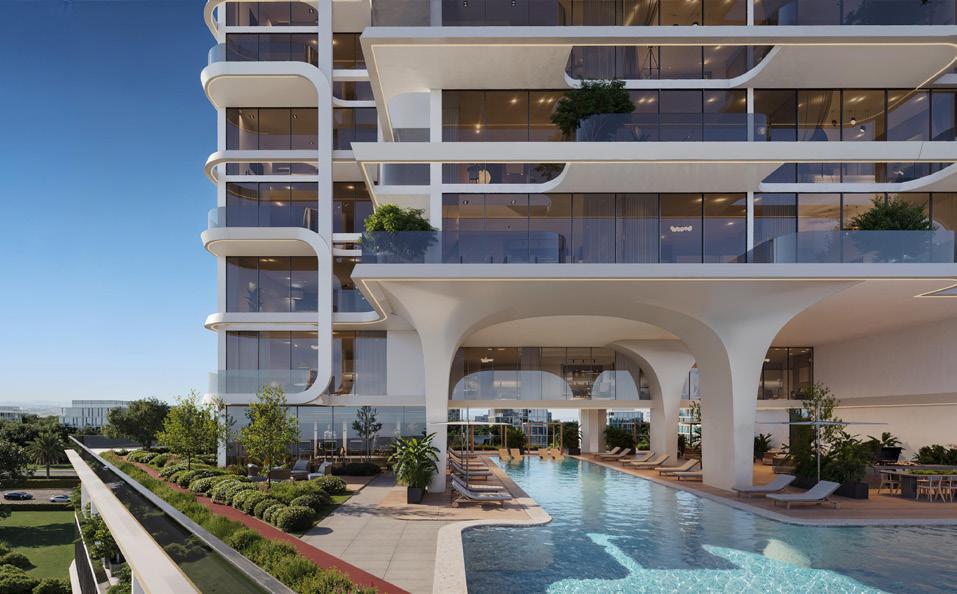

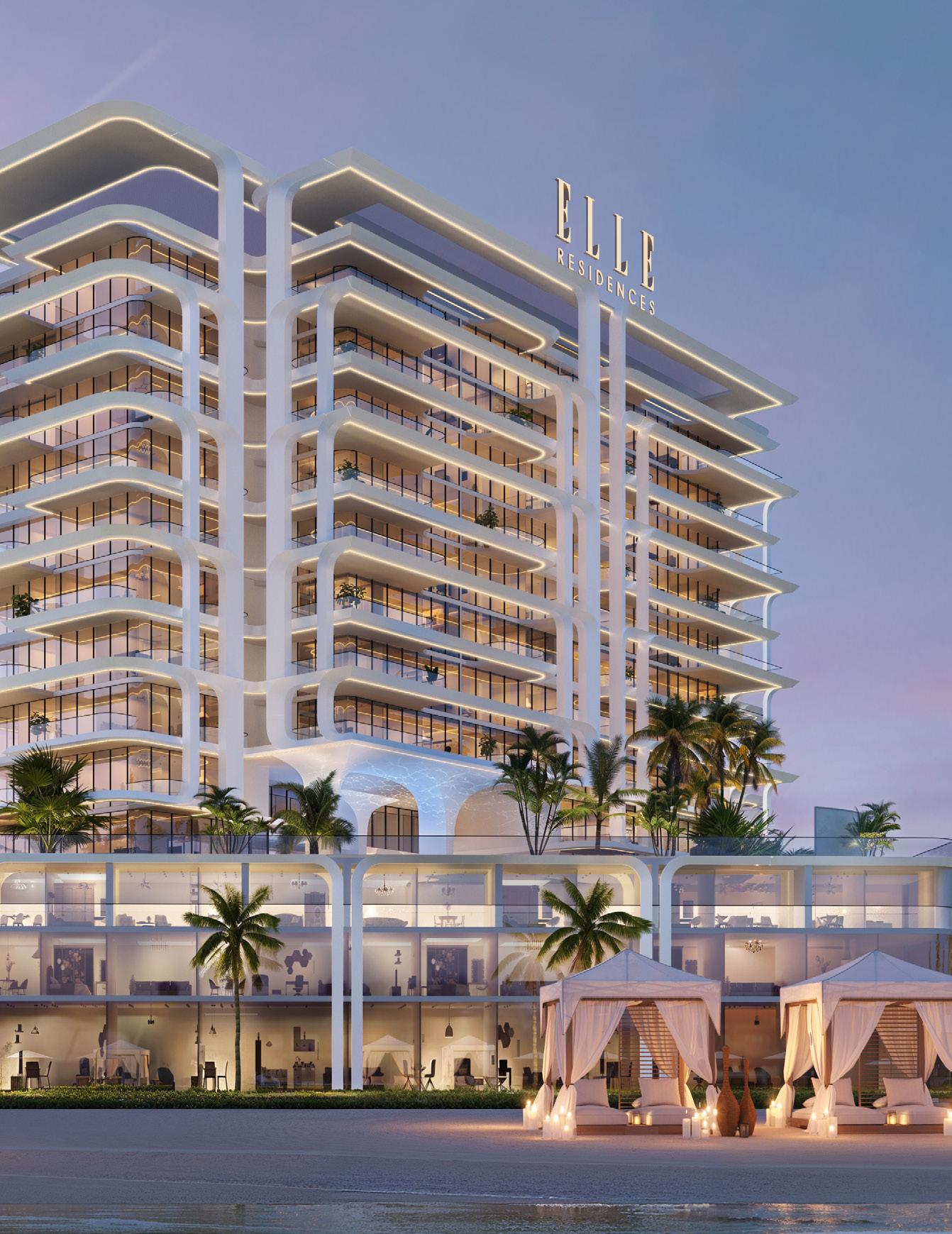
Featuring a collection of 91 beautiful apartments and 7 stunning townhouses, each thoughtfully designed to combine privacy, space and spectacular views, the project will be an investor’s delight and a homeowner’s pride. The project will offer a range of intimate one-bedroom residences to expansive four-bedroom townhouses spanning up to 4,592 sq ft. Every home has been created to frame the sea and skyline through floor-to-ceiling glazing and wraparound terraces. Whether a seasonal retreat or a year-round address, the layouts balance open-plan living with private escapes - a rarity in Dubai’s luxury residential market.
The apartments and townhouses are being brought to life by two internationally acclaimed design firms; The One Atelier, renowned for its work with leading global fashion houses on luxury branded residences such as Dolce & Gabbana, Fendi Casa and Karl Lagerfeld and ARQUINAUT, the creative studio acting as a consultant for ELLE Residences concept and the official ELLE representative.
Interiors draw on ELLE’s five pillars of fashion, beauty, culture, lifestyle and society to create spaces that feel curated and completely unique. Expect sculptural fireplaces, bespoke wallpapers, bronze accents and marble alongside soft, layered lighting and art that pays homage to the city’s vibrant and contemporary scene. ELLE Residences Dubai Islands is designed as a wellness-driven community where rooftop pools and sunlit terraces capture panoramic Gulf view and curated spaces. From private spas and yoga decks to landscaped gardens and social lounges offering sanctuary and connection. A 24-hour concierge, valet and security ensure seamless service, while the amenities are tailored for balance, beauty and belonging.
Living at ELLE Residences Dubai Islands is about embracing a lifestyle as iconic as the brand itself. It’s a world where every detail is designed to inspire confidence, connection and joy. It’s an invitation to live your own cover story. The result is a collection of homes that feel as though they belong on the pages of a magazine.


Satish Sanpal, Chairman, Anax Holding Entrepreneur | Investor

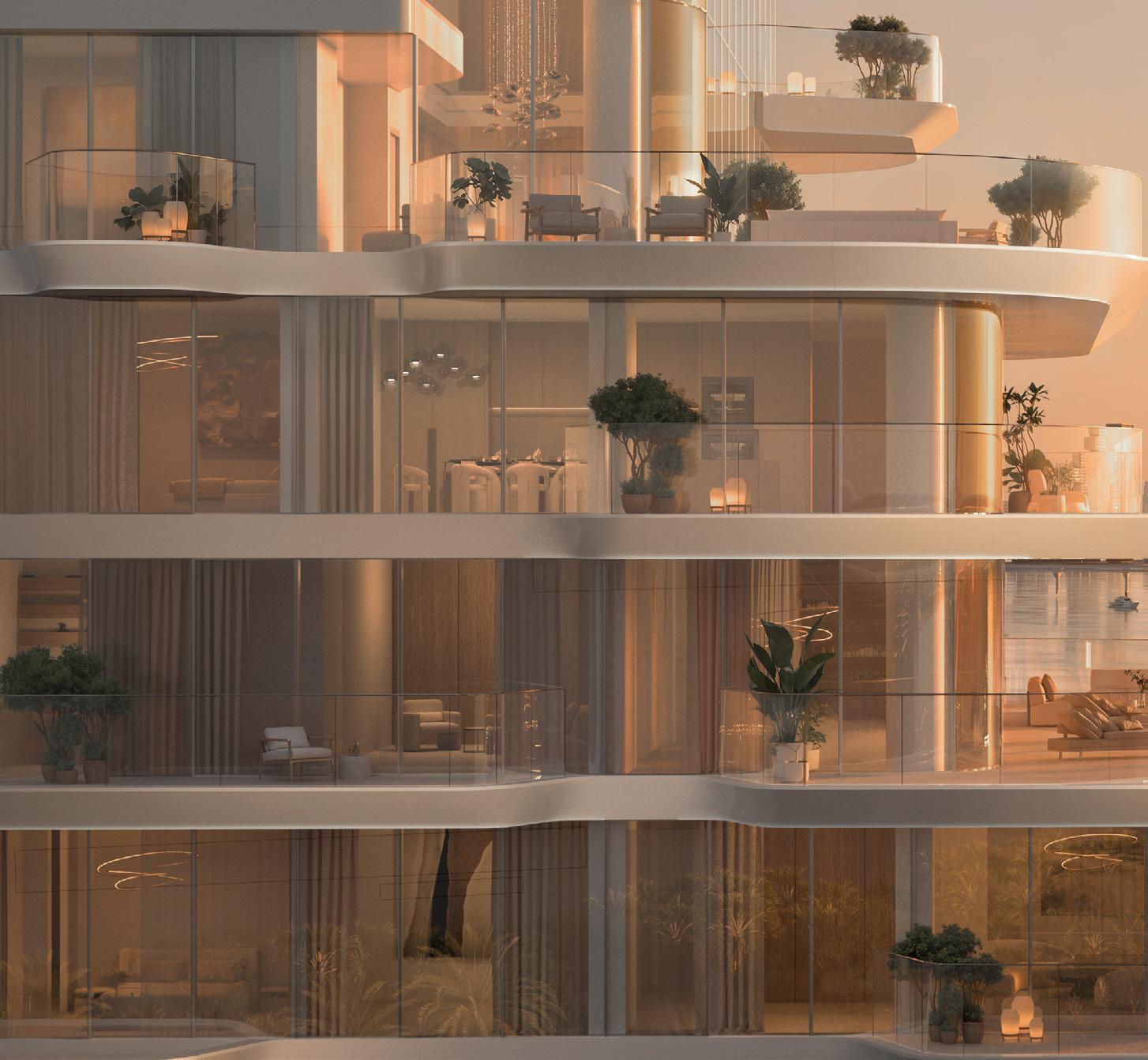

Where
Architecture, Nature and Emotion Converge into Soulful Waterfront Living

In today’s premium real estate landscape, distinction is no longer defined by scale but by soul. True luxury lies in places that deeply connect with their surroundings, inspire emotion, and elevate everyday life. This philosophy drives BEYOND Developments, the bold and forward-thinking real estate brand redefining the art of waterfront living.
Its latest creation, PASSO, a sculptural icon on Palm Jumeirah, stands as a new landmark in contemporary design and purposeful living. Comprising two twin towers,
Avita and Bella, PASSO captures the poetry of the sea and the rhythm of light, blending architecture and emotion in perfect balance. Marking BEYOND’s first flagship beyond its Dubai Maritime City masterplan, it reflects the brand’s belief that architecture should move people as much as it moves skylines.
Design with Purpose
PASSO’s twin forms rise as fluid silhouettes, their curvature expressing balance, rhythm, and calm. The development features around 600 residences curated for elevated coastal living.
The
Collection: A Convergence of Elegance and Essence
Five distinctive collections compose PASSO’s residential offering, each with its own lifestyle narrative:
> The Residences
A refined selection of 1, 2, 3, and 4-bedroom homes designed for flow, comfort, and everyday
A curated mix of 1, 2, 3, and 4-bedroom residences defined by contemporary flow, premium materials, INSPIRED BY TIDES. SHAPED BY WIND. DESIGNED TO MOVE YOU


functionality. Interiors embrace natural light and connection, balancing timeless design with a natural sense of ease.
> The Wellness Collection
For those who value privacy, nature, and wellbeing. Select 1- and 2-bedroom residences feature private gardens and plunge pools that extend into the podium landscape with direct access to greenery and the beach, a true sanctuary where wellness begins at your doorstep
> The Elite Collection

and uninterrupted vistas. Open layouts and panoramic glazing bring the outside in, creating calm, considered living.
> The Penthouses
An intimate portfolio of five sky-level penthouses positioned at the towers’ crowns, with dedicated parking, private lobby and elevator, double-height living, expansive terraces, and plunge pools. Architecture blends inside and out, framing open views of the sea, the Palm, and the city.
> he Beach Mansions
Six standalone 6-bedroom yacht-inspired mansions with private enclosed basement parking and a discreet arrival

sequence. Ground-floor living extends into landscaped gardens with plunge pools stepping toward the beach. Upper levels introduce family lounges, panoramic terraces, and a master suite with private retreat.
For Adil Taqi, CEO of BEYOND Developments, PASSO marks a milestone in the company’s journey to shape a new standard for design-led living.
“PASSO is not just a new address; it is a strategic leap in our journey to craft places that resonate on a deeper human level. Its vision is anchored in three pillars: the Address, the Landmark, and the Experience. We believe architecture should do more than shape skylines; it should inspire emotion, foster connection, and create meaningful experiences.”
A Symphony of Experiences
PASSO’s narrative unfolds through a sequence of experiences that blend resort-level amenities with the privacy of home. The journey begins at a sculpted arrival piazza framed by two glass pavilions, leading into a lush landscape of cascading pools and shaded walkways that flow toward 250 meters of private beach. The Wellness Pavilion, spanning 260 square meters, offers an immersive sanctuary for movement and mindfulness, complemented by yoga decks, reflection corners, and recovery zones. Families enjoy a Montessori-inspired Kids Pavilion, while residents seeking relaxation can retreat to the Spa Deck, Social Lounge, or a Starlit Cinema Terrace that transforms evenings into moments of quiet escape.
At the summit, the Sky Garden and Infinity Pool open to panoramic views of the Arabian Gulf and Dubai’s skyline, offering a sensory experience that captures BEYOND’s philosophy of balance between motion and stillness. Every space has been envisioned to create not only a lifestyle of refinement but a rhythm of belonging that reflects the brand’s belief in holistic, experiential living.
Defining the Next Chapter of Premium Waterfront Living. PASSO aligns seamlessly with Dubai’s vision to be a global leader in livability, innovation, and sustainability. Its biophilic design and wellness-led planning reflect the goals of the Dubai Urban Master Plan 2040 and Real Estate Strategy 2033, placing it among the next generation of developments that define the city’s future. For investors and homeowners alike, PASSO delivers a rare combination of aesthetic distinction, enduring value, and long-term growth potential within one of the world’s most prestigious waterfront settings.


BEYOND. HOME OF THE BOLD
BEYOND Developments is a cultural storyteller. Each project is envisioned as a living narrative where architecture, landscape, and lifestyle converge into a complete 360-degree experience. Guided by five defining pillars; exceptional locations, architectural fluidity, people-centric communities, inclusive excellence, and nature as infrastructure; BEYOND creates destinations that endure, inspire, and reflect the essence of living boldly.
From the 8-million-square-foot masterplan at Dubai Maritime City to the sculptural beauty of PASSO, BEYOND continues to shape destinations that connect design with purpose and life with emotion, where architecture finds its soul and living becomes art
“PASSO’s narrative unfolds through a sequence of experiences that blend resort-level amenities with the privacy of home.


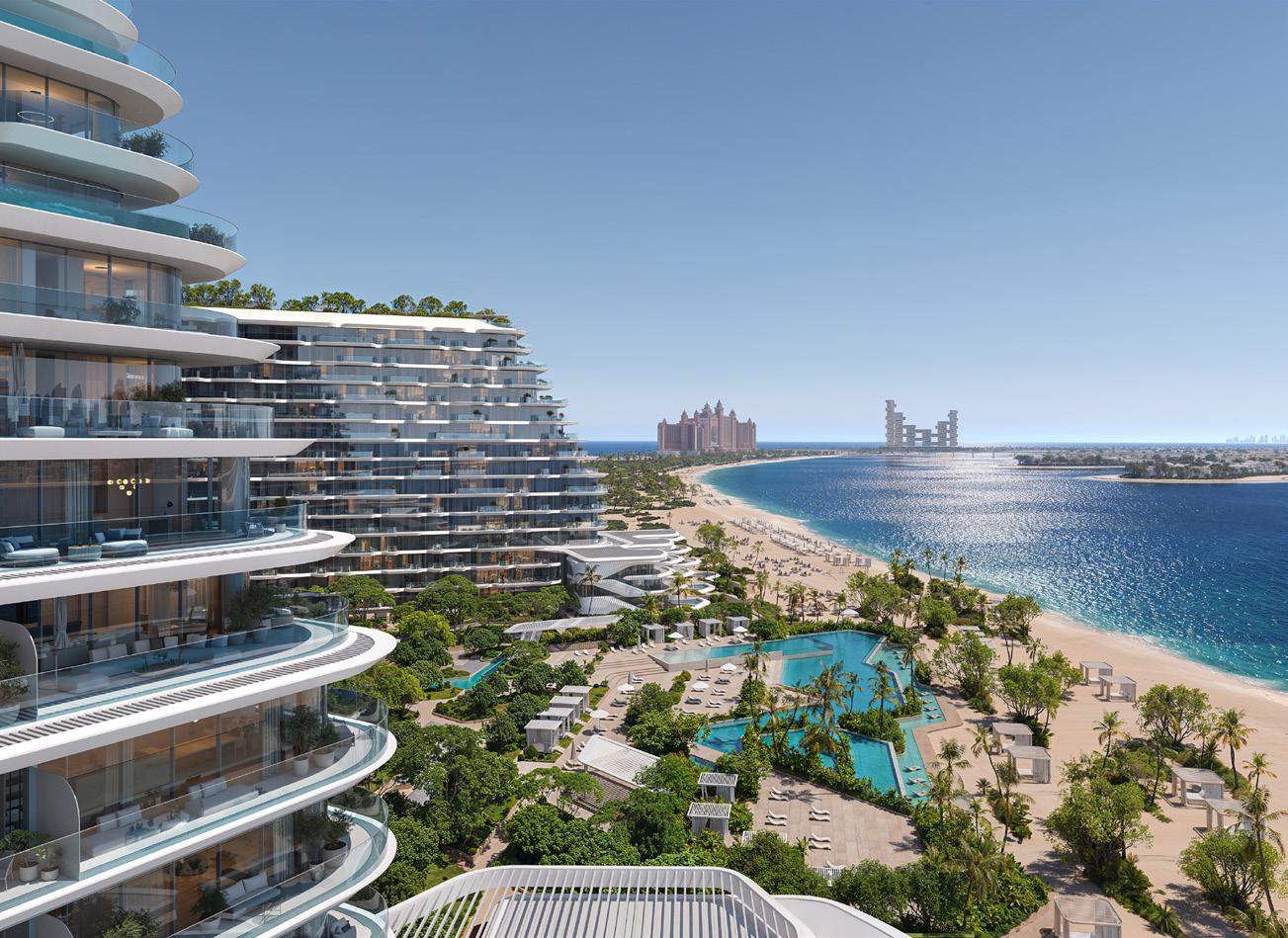
Great leaders don’t set out to be leaders; they set out to make a difference.
PALM JEBEL ALI
DUBAI’S GRAND RETURN TO THE SEA
The next great island of dreams is rising — and it’s set to reshape the city’s property horizon
Dubai has always been a city that thinks in the language of awe. From the world’s tallest tower to its record-breaking malls, it has built an identity on the promise of the extraordinary. But even by Dubai’s lofty standards, one project stands apart — a phoenix rising from the sea, bold, beautiful, and brimming with promise. That project is Palm Jebel Ali, the long-awaited sister to Palm Jumeirah, reborn for a new era.
For years, the silhouette of this second palm sat quietly on the horizon, its outline visible to those who drove along Sheikh Zayed Road, a reminder of ambition paused. Now, after more than a decade of dormancy, the island is coming to life again — not as a mere extension of the first palm, but as something even more grand: a futuristic, sustainable, resort-living marvel designed for the world’s most discerning residents.
When Nakheel first announced Palm Jebel Ali in 2002, it was heralded as the next chapter in Dubai’s coastal story — an island that would be twice the size of Palm Jumeirah and redefine luxury living once again. Then came the global financial crisis, and the waves of progress subsided. But Dubai, ever resilient, does not forget its dreams. Two decades later, the plan has returned, reenergised and refined. The scale remains staggering: around 13.4 square kilometers of land reclaimed from the sea, over 90 kilometers of pristine beaches, and 110 kilometers of new coastline. It will be home to more than 35,000 families and feature more than 80 hotels and resorts — a self-contained world of sun, sand and style.
The new masterplan, approved under Dubai’s 2040 Urban Master Plan, emphasises sustainability, community and connectivity. Thirty percent of public facilities are set to operate on renewable energy, and the island will feature smart infrastructure, pedestrian-friendly spaces and green mobility. What was once an audacious engineering feat is now evolving into a blueprint for a sustainable, ocean-front future.



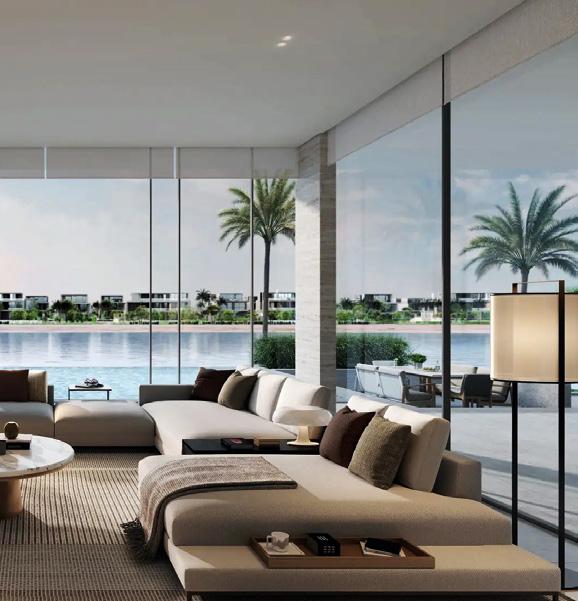




To imagine Palm Jebel Ali is to imagine a living, breathing ecosystem. The island is not merely about villas and towers; it’s about creating a lifestyle that feels like an everyday holiday. Picture a mosaic of neighbourhoods shaped along fronds that stretch into turquoise waters — each one with its own identity. Some will be family-focused communities surrounded by parks and schools, others luxury enclaves with private beaches and yacht marinas. Along its crescent will rise a collection of ultra-exclusive hotels and resorts — destinations within a destination. The design philosophy is about connection: between land and sea, between privacy and public life, between indulgence and sustainability. From sunrise yoga decks on the beach to gourmet waterfront promenades, the island’s rhythm is meant to flow naturally, with each experience unfolding like a story.
Every detail is deliberate. Villas will be designed with floorto-ceiling glass that opens onto the ocean. Streets will be lined with greenery. Walkways and cycle paths will link every frond to the main spine, ensuring that even in such grandeur, there’s intimacy — a sense that life here is as practical as
it is poetic. Luxury in Dubai has evolved. Where once it was defined by extravagance and spectacle, today it’s shaped by wellbeing, space and connection to nature. Palm Jebel Ali embraces that evolution. Its architecture will fuse natural tones, modern minimalism and a sense of calm that feels more like a wellness retreat than a city district.
Buyers are already responding. Early villa releases, such as The Beach Collection and The Coral Collection, have drawn extraordinary demand. These are not simply houses; they are statement pieces — vast, sculptural residences designed with private pools, gardens that open onto white sands, and the kind of craftsmanship that has become synonymous with Dubai’s top-tier market. Developers have learned that the new global elite want something deeper than glitz. They want time, serenity, and meaning in design. Palm Jebel Ali delivers that. Whether through solar-powered homes, shaded green corridors or beach promenades where residents can walk from home to café to marina without ever touching a car, this island signals a shift toward more conscious luxury.
Palm Jebel Ali | Dubai’s Grand Return to the Sea
Palm Jebel Ali has reignited more than construction cranes — it has sparked a surge of confidence through Dubai’s property sector. Off-plan sales across the city have risen sharply, and many credit the project’s revival as a major catalyst. The return of one of the world’s most recognisable developments signals that Dubai’s market is in full stride again, powered by population growth, foreign investment, and a renewed appetite for coastal living. In many ways, Palm Jebel Ali acts as a barometer for Dubai’s broader economy. When a mega-project of this scale moves forward, it reflects investor faith in long-term stability. And that optimism is contagious. Developers across the emirate are launching new communities, banks are reporting strong mortgage demand, and global buyers — from Europe, Asia and the Middle East — are circling for early opportunities.
For high-net-worth individuals, Palm Jebel Ali represents something unique: scarcity. There is only so much coastline in the world, and even less that can offer the Dubai blend of safety, sunshine, and global connectivity. As one luxury broker recently remarked, this is not just a property investment — it’s an investment in an experience that can’t be replicated. The influence of Palm Jebel Ali goes far beyond its boundaries. The project has re-energised the construction sector, with billions of dirhams in contracts flowing to local and international firms. Infrastructure, utilities, logistics — all are benefitting from the renewed activity. Then there’s the hospitality sector. With more than eighty planned resorts, the island will expand Dubai’s tourism capacity significantly. Analysts predict that once operational, Palm Jebel Ali could attract millions of visitors annually, adding a new
To imagine Palm Jebel Ali is to imagine a living, breathing ecosystem.
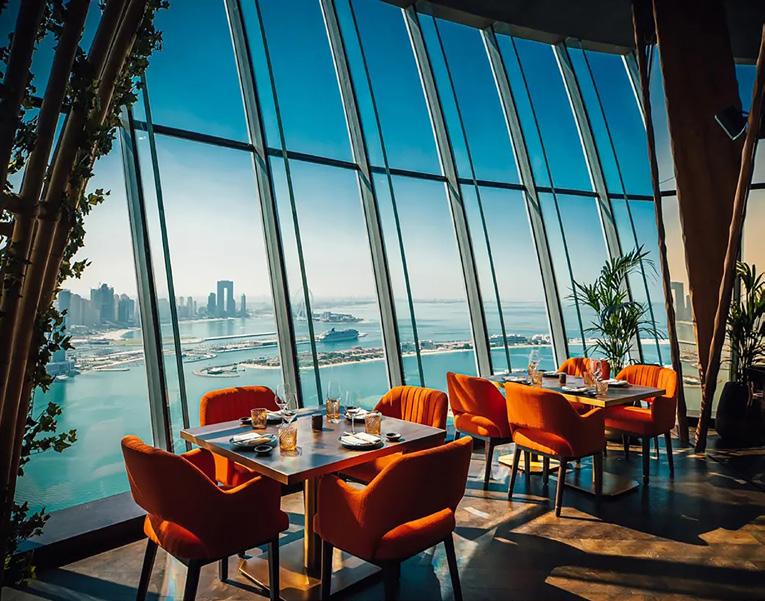

dimension to Dubai’s leisure and travel portfolio. That, in turn, supports employment, F&B expansion and retail development across the region.
But perhaps most importantly, the island helps Dubai diversify its appeal. For investors, it’s a tangible demonstration that the city’s growth is not slowing; it’s maturing. Dubai is evolving from an emerging hub into a stable, cosmopolitan city that consistently reinvents itself. Palm Jebel Ali is both a symbol and an engine of that evolution. Imagine waking up to the sound of gentle waves brushing against the shore, sunlight streaming through panoramic windows, and the horizon stretching endlessly before you. Step outside, and your backyard is a private beach. A short walk brings you to a café where you can sip your morning espresso as yachts glide by. For residents, this will be the rhythm of life on Palm Jebel Ali. Days spent paddleboarding, evenings dining under the stars, weekends hosting friends in beach clubs or exploring new wellness retreats — all within the same island.
It’s not difficult to see why demand is soaring. The pandemic redefined what people value in a home. Space, privacy, wellness, connection to nature — these are now essentials. Palm Jebel Ali offers all of them, at a level unmatched almost anywhere in the world. For many, this isn’t just a place to live; it’s a place to reset, to find balance, to make life feel like a permanent holiday. If Palm Jumeirah was about ambition, Palm Jebel Ali is about evolution. Sustainability has been woven into every aspect of its design. Roads and buildings are being planned for optimal energy efficiency. Landscaping will use drought-tolerant plants. Public transport on the island will include electric and autonomous vehicles. Renewable energy will power community facilities, and smart systems will monitor water and waste consumption.
Dubai understands that luxury and responsibility must coexist. The city’s leadership has repeatedly emphasised that the future belongs to those who can combine innovation with stewardship. Palm Jebel Ali is one of the clearest examples of that philosophy in action — proof that mega-projects can be both aspirational and environmentally conscious. Location is another factor behind the excitement. Positioned further west along the coastline, Palm Jebel Ali sits close to Dubai South, Expo City and Al Maktoum International Airport — areas expected to see explosive growth as Dubai expands. The island will be seamlessly connected to the mainland via new bridges and highways, ensuring residents are only minutes from the city’s key business and leisure districts.


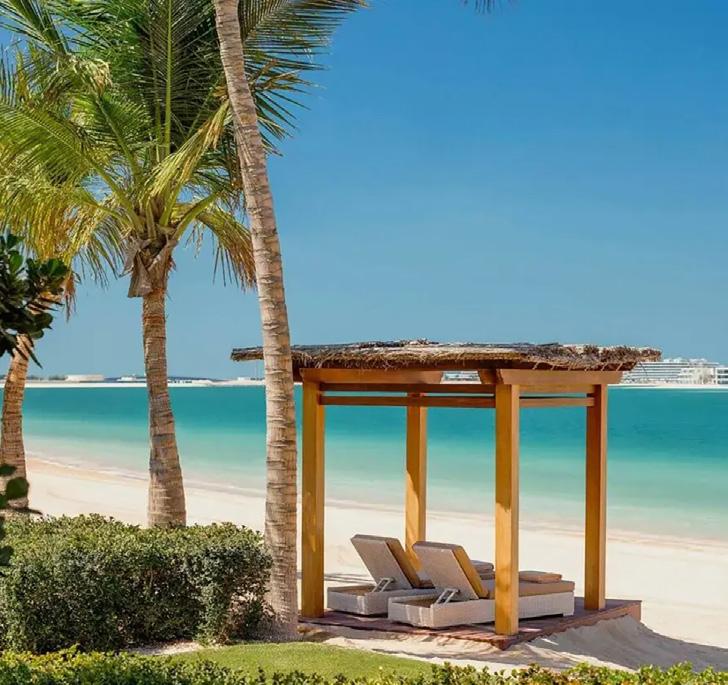
Palm Jebel Ali | Dubai’s Grand Return to the Sea
For global citizens who split their time between capitals, the appeal is obvious. Palm Jebel Ali offers the luxury of island life without isolation — the perfect balance of retreat and access. It’s the kind of address that instantly defines status, much like Palm Jumeirah did two decades ago. Perhaps the most remarkable thing about Palm Jebel Ali is not its scale but its symbolism. It represents continuity — proof that Dubai doesn’t abandon its dreams; it refines them. The island’s resurrection tells the world that the city’s confidence is unshaken and its creative vision stronger than ever. When the first residents move in, they’ll be part of something much larger than a community. They’ll be part of Dubai’s living history: a city constantly pushing boundaries, transforming imagination into skyline.
This is not merely a real estate story. It’s an urban and human story — of people daring to build beauty where once there was only sea, and doing it in a way that redefines what modern living can mean. The timing couldn’t be more perfect. The global real estate market is undergoing a reset, with investors seeking stability, transparency and long-term growth. Dubai offers all three. Its economy is robust, its governance is clear, and its property market has proven remarkably
resilient. Palm Jebel Ali amplifies those strengths. By expanding Dubai’s luxury inventory and creating an entirely new coastline, it opens fresh avenues for investment. More importantly, it sets a new benchmark for the kind of lifestyle developments that will define the next decade: sustainable, integrated, and experience-driven.
Already, analysts are noting that Palm Jebel Ali’s relaunch has had a measurable impact on sentiment. Property prices in surrounding areas have edged upward, investor enquiries have spiked, and developers are fast-tracking projects nearby. The island isn’t just a destination; it’s a catalyst. When complete, Palm Jebel Ali will stand as a masterpiece of modern coastal development — an island that embodies Dubai’s spirit of reinvention. It will have redefined what beachfront living means, setting a new standard not just for the city, but for the world.
For residents, it will be an address of pride. For investors, a symbol of confidence. For the city itself, it will be another shining chapter in its story of transformation. As dusk settles over the Gulf and the lights of the first villas begin to glow, Palm Jebel Ali will once again prove that Dubai’s magic lies in its ability to dream big — and then, to make those dreams real. Because in Dubai, the impossible isn’t a warning. It’s an invitation.


Enlighten Your Eternal Beauty, Inside and Out!
@muarjewels www.muarjewels.com
info@muarjewels.com
The road to success and the road to failure are almost exactly the same. The difference is persistence.
Colin R. Davis

SHARJAH RISING
THE QUIET POWER BEHIND THE UAE’S NEXT PROPERTY BOOM
A new era of design, community and confidence is transforming the cultural capital into a property powerhouse
For years, Sharjah was the UAE’s quieter neighbor — a place of tradition, family values and cultural depth. While Dubai reached for the sky with glittering towers, Sharjah chose a different rhythm, investing in education, art, and heritage. It was the city of museums, mosques and poetry — dignified, deliberate, and serene. But today, that serenity hums with something new. Beneath the domes and minarets, cranes have joined the skyline. A transformation is unfolding, and it’s turning Sharjah into one of the Gulf’s most intriguing property markets.
What’s happening here is not a fleeting construction spree; it’s a measured evolution — the careful rise of a city that’s learned from the world’s great urban stories and crafted its own vision for modern living. Sharjah’s property market is no longer a supporting act to Dubai’s lead. It is charting its own course, built on a foundation of affordability, design integrity, and a commitment to human-scale urbanism. The result is a city emerging as one of the UAE’s most liveable, investable, and authentically Arab destinations.
In recent years, Sharjah has quietly engineered one of the most impressive transformations in the region’s real estate landscape. Once seen primarily as a commuter city for those working in Dubai, it’s now becoming a self-contained hub with its own magnetism. Projects like Aljada, Maryam Island, Tilal City, and Sharjah Sustainable City are reshaping the skyline — and with them, perceptions.

Drive through the emirate today and the evidence is everywhere. Wide, landscaped boulevards frame clusters of contemporary architecture. New communities are rising around lakes and parks. Cafés spill onto shaded promenades, and families stroll past art installations and food markets. Sharjah has discovered the formula that so many cities aspire to but few achieve: balance. The balance between affordability and aspiration, tradition and innovation, urban energy and natural calm.
What makes Sharjah’s ascent remarkable is the clarity of its vision. It hasn’t sought to replicate Dubai’s extravagance or Abu Dhabi’s monumental scale. Instead, it’s chosen a path that feels uniquely its own — a city built for people, not just investors. The Sharjah government has long prioritised cultural and environmental sustainability, and that ethos now extends deeply into real estate. Every new masterplan carries the imprint of long-term thinking: walkability, greenery, community engagement, and inclusivity.
Sharjah Rising | The Quiet Power Behind
“While Dubai reached for the sky with glittering towers, Sharjah chose a different rhythm, investing in education, art, and heritage.
Perhaps the most visible emblem of this new Sharjah is Aljada, developed by Arada, one of the UAE’s most dynamic real estate companies. Spanning over 24 million square feet, it’s designed as a complete urban destination — a city within a city, where work, play and living intertwine seamlessly. Cafés and coworking spaces sit beside leafy residential avenues. Boutiques and restaurants spill into pedestrian squares. There’s a central park at its heart, buzzing with energy, concerts and community events. In every direction, you can feel the rhythm of a city that’s young, confident, and forward-looking.
Maryam Island, another headline development, takes that same ambition to the waterfront.
It’s Sharjah’s answer to coastal luxury — an elegant community of apartments, hotels and promenades overlooking the Arabian Gulf. Here, the city’s cultural charm meets the ease of resort living. It’s redefining what coastal life in Sharjah looks like: cosmopolitan, yet distinctly Emirati in soul.
Then there’s Sharjah Sustainable City, a collaboration that has become a regional model for environmentally conscious living. Solar power, water recycling, electric mobility and car-free zones are not marketing buzzwords here — they’re a way of life. Families who move in don’t just buy homes; they buy into a philosophy of future living. It’s this combination of social
awareness and economic sensibility that gives Sharjah’s property market such depth.
For investors, the appeal is clear. Sharjah offers competitive entry prices, high yields and strong rental demand driven by a growing population of professionals, families and students. The emirate’s strategic decision to open its freehold property market to all nationalities in recent years has proven transformative. Where once ownership was limited, now a global audience can buy, live and invest with confidence. That change alone has expanded Sharjah’s market reach exponentially, unlocking new streams of capital and international attention.
But beyond the economics lies something more enduring: authenticity. Sharjah has managed to modernise without losing its sense of place. Its skyline may be evolving, but its identity — rooted in culture, education and family — remains its anchor. For many buyers, that combination is irresistible. It’s a city where children grow up surrounded by art and green spaces, where communities feel safe and neighbourly, where architecture respects heritage even as it embraces the future.
The government’s role in this transformation has been crucial. Visionary leadership, regulatory transparency and infrastructure investment have all underpinned the city’s growth. The Sharjah
Investment and Development Authority (Shurooq) has played a major role, driving landmark projects such as Heart of Sharjah, Al Noor Island and Kalba Waterfront — each designed to elevate quality of life while attracting tourism and investment. These projects don’t simply add value; they define a brand of urban beauty that feels organic to Sharjah’s character.
At the same time, the emirate’s infrastructure keeps expanding to match its real estate ambitions. Roads have been upgraded, new bridges built, and connections to Dubai and the Northern Emirates made smoother. Educational institutions — from the University of Sharjah to the American University of Sharjah — continue to attract talent, anchoring an economy increasingly based on knowledge, creativity and entrepreneurship. The result is a stable ecosystem that supports sustainable growth.
In recent years, real estate data has reflected this momentum. Off-plan sales have surged, developer launches are selling out quickly, and average price appreciation has remained steady but not speculative — the hallmark of a healthy market. Sharjah’s focus on affordability ensures that growth remains inclusive. Apartments, townhouses and villas cater to a wide range of income groups, from first-time buyers to high-end investors. Unlike the hyper-luxury segments elsewhere, Sharjah’s market thrives on accessibility — making it both resilient and socially meaningful.
Developers have taken note. Arada, Eagle Hills, Tilal Properties, and Sharjah Asset Management have collectively reshaped the emirate’s urban fabric. Their projects don’t simply build homes; they create experiences. Walk through Aljada’s central boulevard on a weekend evening, and you’ll see food trucks, children’s play zones, art shows and open-air cinema nights — the essence of modern urban community life. It’s a scene that would fit comfortably in any global city, yet it’s unmistakably Sharjah in spirit.
The growth has also attracted attention from international investors who once overlooked the emirate. Many see Sharjah as the sweet spot of the UAE property landscape: less volatile than hypermarkets, yet dynamic enough to promise long-term gains. Yields remain attractive, especially in mixed-use developments where retail and residential interplay
creates steady demand. For end users, the draw is lifestyle — a city where you can own a spacious home, enjoy beach access, world-class education, and cultural enrichment, all within a calm, wellconnected environment.
As the city grows, so too does its global reputation. Sharjah’s selection as UNESCO’s Cultural Capital of the Arab World was not an endpoint but a foundation. That same cultural DNA runs through its modern developments. Public art installations, creative districts, book fairs and film festivals continue to anchor its global identity. This fusion of culture and commerce gives its property market a distinctive edge — a sense that real estate here is not just about space, but about belonging.
Perhaps the most exciting part of Sharjah’s property story is what lies ahead. The next decade promises a deeper integration of sustainability, design and technology. Smart communities will manage energy, mobility and resources seamlessly. Public spaces will prioritise health and interaction. Developers are already experimenting with digital twin models and AI-driven planning, ensuring every metre of new urban fabric contributes to a larger, more connected ecosystem.
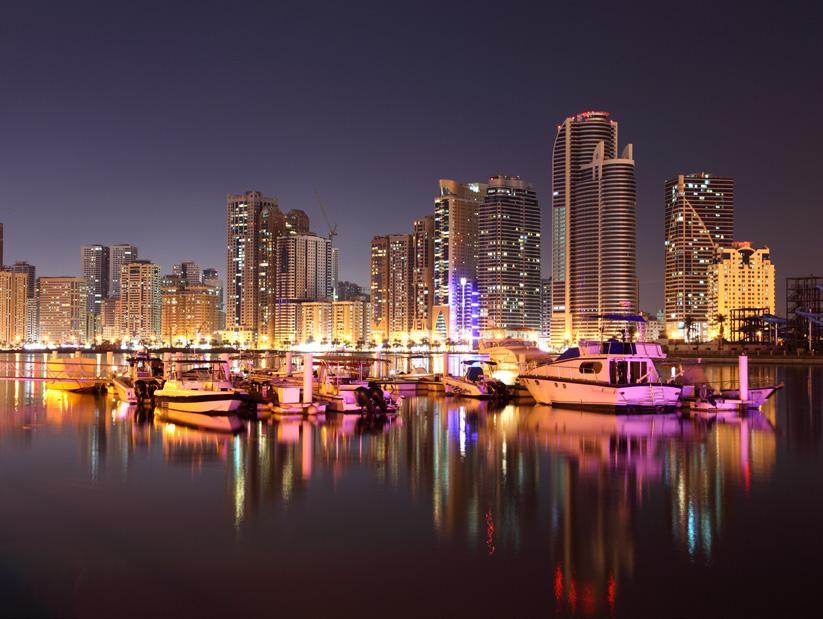

And yet, through all this progress, Sharjah’s essence remains unchanged. It’s still a place where families gather for evening walks by the corniche, where call to prayer echoes over tree-lined streets, and where development never feels divorced from culture. That’s the secret to its success — it grows without losing itself.
In the broader UAE context, Sharjah’s rise strengthens the federation’s diversity. While Dubai leads with innovation and Abu Dhabi anchors with capital, Sharjah contributes balance — a model of sustainable, humancentred growth. The emirate’s approach to real estate proves that progress need not be loud to be powerful. It can be thoughtful, deliberate, and deeply rooted in values.
For investors looking to the future, Sharjah represents stability with upside. For families, it offers a lifestyle
grounded in comfort and community. For the UAE, it’s a living testament to the idea that growth, when guided by vision and purpose, can enrich not just cities, but lives.
As dusk falls over Al Majaz Waterfront and the skyline glows in shades of amber, you can see the story of Sharjah reflected in its waters — a city that has learned to flow gracefully between past and future. It doesn’t chase the spotlight; it earns it, quietly, confidently, and beautifully. The rise of Sharjah is not a sudden leap but a steady climb, built on trust, tradition and the timeless power of good design.
And as cranes continue to dot its horizon, one thing is certain: the story of Sharjah’s growth is far from over. In many ways, it’s just beginning — a new chapter in the UAE’s remarkable journey, written in sand, steel and sunlight.


He who has never learned to obey cannot be a good commander.
Aristotle
The Algorithm of How AI is Rewriting the Real Estate Story OPPORTUNITY
From blueprints to buying decisions, artificial intelligence is quietly — and profoundly — reshaping how we build, live and invest

For most of its history, the real estate industry has been driven by instinct — the architect’s intuition, the investor’s gut, the buyer’s sense of “this feels right.” But a quiet revolution is unfolding, one written not in cement but in code. Artificial intelligence, once a distant concept confined to labs and science fiction, has become the unseen partner in how property is imagined, built and sold. It’s not just a buzzword; it’s becoming the backbone of a smarter, faster and more transparent market.
In cities from Dubai to Singapore, London to Los Angeles, AI is now embedded at every stage of the real estate cycle. It helps developers design buildings, construction teams plan logistics, agents market homes, investors identify opportunities, and buyers make decisions. The change is subtle but sweeping — a shift from a business built on experience to one augmented by intelligence. And unlike past disruptions, this one doesn’t replace the human touch. It amplifies it.
For builders, artificial intelligence has become a tool of precision. What once took months of feasibility studies can now be modelled in days. Algorithms can analyse land plots, zoning rules, sunlight exposure, environmental data and market demand to propose the most efficient, profitable use of every square metre. Architects are feeding AI systems design constraints — budget, climate, orientation — and receiving dozens of optimised concepts within minutes. Generative design tools are doing what no drafting table ever could: exploring thousands of possible versions of a building before a single line is drawn.

The result isn’t a cold, machine-made aesthetic. In fact, the opposite is happening. By handling the complex calculations, AI frees designers to focus on creativity and experience. They can shape spaces that are not only more sustainable but more humane — buildings that breathe better, use less energy, and respond intelligently to the people who inhabit them. Smart building management systems now learn from daily patterns, adjusting lighting, temperature and energy use automatically. A hotel can fine-tune its operations in real time; a residential tower can reduce its carbon footprint while improving comfort. The line between architecture and artificial intelligence is blurring — and the outcome is a new kind of intelligence built into the very bones of our cities.
For developers, AI has become the ultimate risk manager. Predictive analytics can forecast market trends, assess construction timelines, and even simulate the financial impact of design changes long before ground is broken. In a business where a single misjudgment can cost millions, this kind of foresight is invaluable. Developers are using AI to monitor supply chains, detect project delays, and optimise resource allocation. Some systems are so advanced they can predict where bottlenecks will occur before they happen, allowing teams to adjust in real time.
On the sales and marketing side, the transformation is equally striking. The traditional sales funnel — showrooms, flyers, phone calls — is giving way to a more personalised, data-driven approach. AI-driven platforms can now identify what potential

buyers are searching for, when they are most likely to buy, and what kind of messaging resonates with them. Virtual agents powered by natural language processing can guide clients through property listings 24 hours a day, answering questions, scheduling tours and even negotiating basic terms. Augmented reality and AI-enhanced visualisations allow buyers to “walk through” homes that haven’t yet been built, customising finishes and layouts with a few clicks.
This isn’t about replacing real estate agents; it’s about making them more powerful. With AI, agents can spend less time on repetitive administrative work and more time on what humans do best — building relationships and trust. They arrive at client meetings with deeper insights: where a buyer’s interests truly lie, which properties align not just with their budget but with their lifestyle and long-term plans. In essence, AI gives professionals what every great agent has always relied on — intuition — but backed by data, not just instinct.
For buyers, AI is changing the way decisions are made. Homehunting, once an overwhelming process, is becoming curated and intelligent. Recommendation engines — similar to those that suggest movies or music — now help buyers discover properties they might never have considered, matching their preferences to inventory across multiple platforms. Mortgage applications are being streamlined with AI-backed credit scoring that looks beyond static numbers, analysing spending habits and employment stability to paint a fuller, fairer picture of creditworthiness.


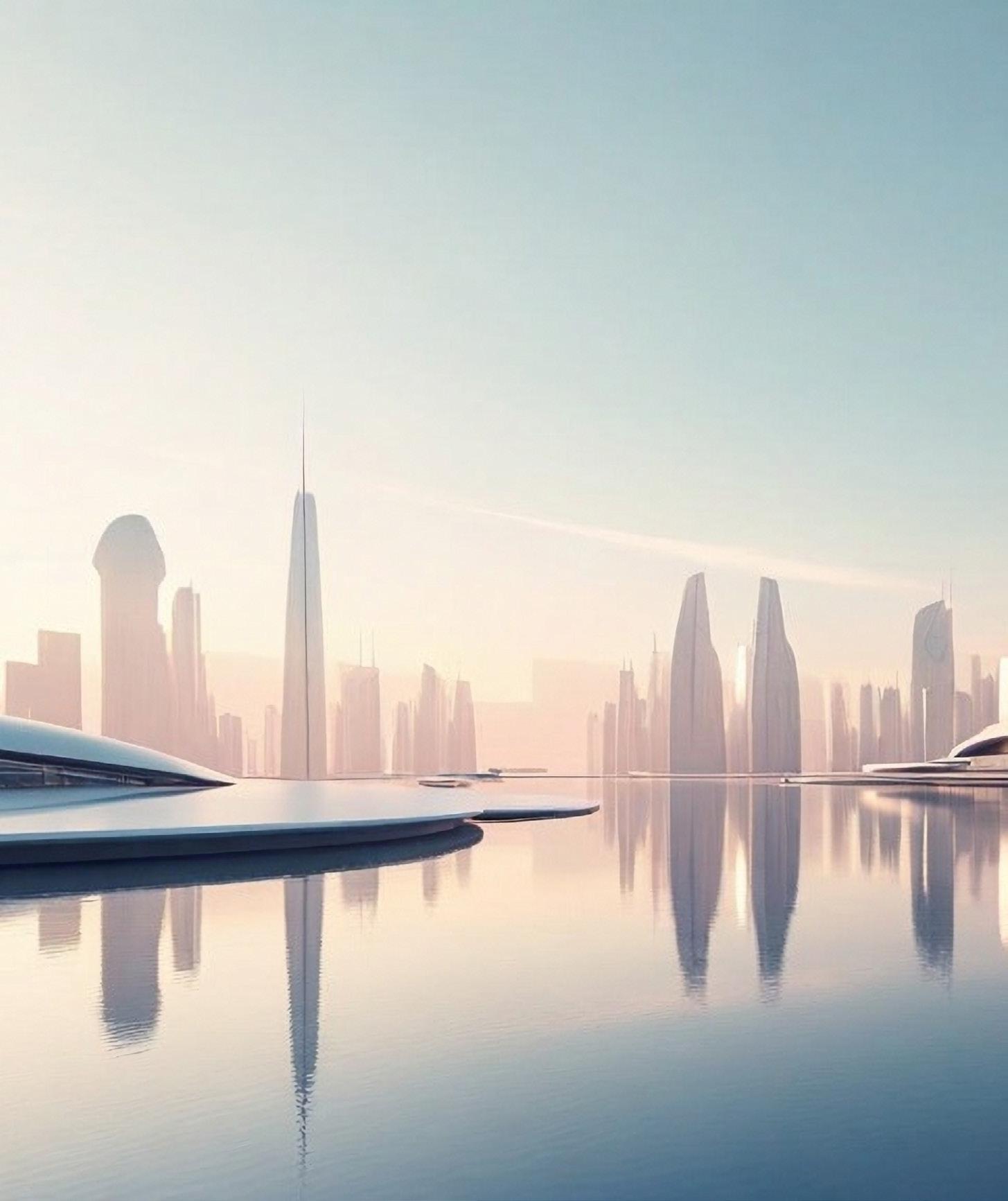
Even the act of buying itself is becoming more transparent. AI tools can scan thousands of transactions to detect pricing anomalies, ensuring buyers pay fair value. Legal review systems can read entire contracts in seconds, flagging potential issues or hidden clauses that might have slipped past human eyes. The opaque and sometimes intimidating world of property acquisition is being replaced by something closer to clarity.
Investors, too, are discovering the power of artificial intelligence. Where once market insight depended on expensive reports and insider connections, today predictive models sift through millions of data points — from rental yields to demographic shifts, infrastructure plans to social media sentiment — to spot opportunities early. AI-driven funds are now allocating capital dynamically, adjusting portfolios based on real-time indicators. For institutional investors, this has become an essential edge. For individual investors, it’s levelling the playing field.
AI doesn’t just predict; it learns. That’s what makes it so transformative. A system trained on historical price data, for example, doesn’t just forecast future appreciation — it continuously refines its accuracy as new data arrives. This dynamic intelligence means that investors can react faster to changes in demand, interest rates or policy. The result is a market that’s not only smarter but also more stable, where risk is distributed more evenly because everyone is better informed.
Beyond analytics, artificial intelligence is reshaping how properties are managed once built. Smart homes have moved from novelty to norm, with AI systems integrating lighting, climate, entertainment and security seamlessly. Homeowners can now monitor and manage their entire environment from a single app or voice command. Buildings are becoming living organisms — self-regulating,
adaptive, and efficient. Maintenance issues are predicted before they occur. Energy consumption is tracked and minimised. Even elevators, lighting systems and water pumps are being equipped with AI sensors that learn from usage patterns to operate more efficiently.
For tenants, this means comfort. For owners, it means value. Properties that are smarter to live in are proving smarter to invest in. AI-driven asset management platforms are already demonstrating higher returns through predictive maintenance and energy optimisation. What used to be reactive — fixing problems when they arise — is becoming proactive, preserving both capital and quality of life.
Perhaps the most profound change AI is bringing to real estate isn’t in the buildings themselves, but in the philosophy of the industry. For decades, property has been viewed as a fixed asset — something static, built and then sold. But AI introduces a dynamic layer, where data becomes as valuable as the concrete itself. Every building now generates information: how it’s used, when it’s occupied, what amenities people value most. This feedback loop allows developers to design better projects, investors to make smarter bets, and cities to plan more intelligently.
Urban planners are embracing AI as well, using it to model everything from traffic flow to heat distribution, population growth to green space. Cities like Dubai, Singapore and Helsinki are experimenting with “digital twins” — virtual replicas of real urban environments — to simulate how new developments will impact mobility, environment and economy before they are built. This convergence of real estate and digital intelligence is redefining what it means to create a city. It’s not just about constructing buildings anymore; it’s about engineering ecosystems.

Yet for all the sophistication, the human element remains central. Real estate is, at its heart, about people — their dreams, investments and sense of belonging. AI doesn’t erase that; it enhances it. Buyers are no longer guessing whether they’re making the right choice. Investors are no longer gambling in the dark. Builders are no longer relying on static plans. Everyone, from the homeowner to the city planner, is part of a system that learns, adapts and evolves.
Of course, challenges remain. The ethics of data collection, the transparency of algorithms, and the need for skilled oversight will shape how responsibly AI integrates into real estate. There are also
questions of accessibility — ensuring that smaller firms and individual buyers can benefit from these tools, not just large institutions. But these are not barriers; they’re milestones on the path to maturity. As trust builds, adoption accelerates.
In markets like the UAE, where innovation is almost a civic duty, the pace is particularly striking. Developers are already integrating AI into customer service chatbots, predictive maintenance systems and even masterplanning software. Property portals are using machine learning to predict buyer intent and adjust listings dynamically. Government agencies are exploring AI-powered urban data platforms that could one day orchestrate everything from zoning

“AI may be invisible, but its influence is everywhere in the curves of the next skyline, the stability of the next market, and the confidence of the next generation of homeowners.

to sustainability targets. The result will be cities that think as dynamically as the people who live in them. The convergence of AI and real estate marks more than a technological evolution; it’s a cultural one. It represents a shift from building spaces that simply house us, to creating environments that understand us. It’s the promise of neighborhoods that anticipate needs, buildings that conserve energy intelligently, and markets that operate with unprecedented fairness and foresight.
If the last century of real estate was defined by physical infrastructure, the next will be defined by digital intelligence. Steel and glass will always shape skylines, but data will shape destiny. The developers
who embrace AI today will build not just structures, but systems — living frameworks of information, efficiency and experience. The investors who understand its potential will see value where others see complexity. And the buyers who trust in it will find homes that are more than smart; they’ll be truly responsive, companions in everyday life.
AI may be invisible, but its influence is everywhere — in the curves of the next skyline, the stability of the next market, and the confidence of the next generation of homeowners. The future of real estate isn’t arriving tomorrow. It’s already here, quietly learning, predicting, and designing a world that feels more human than ever.
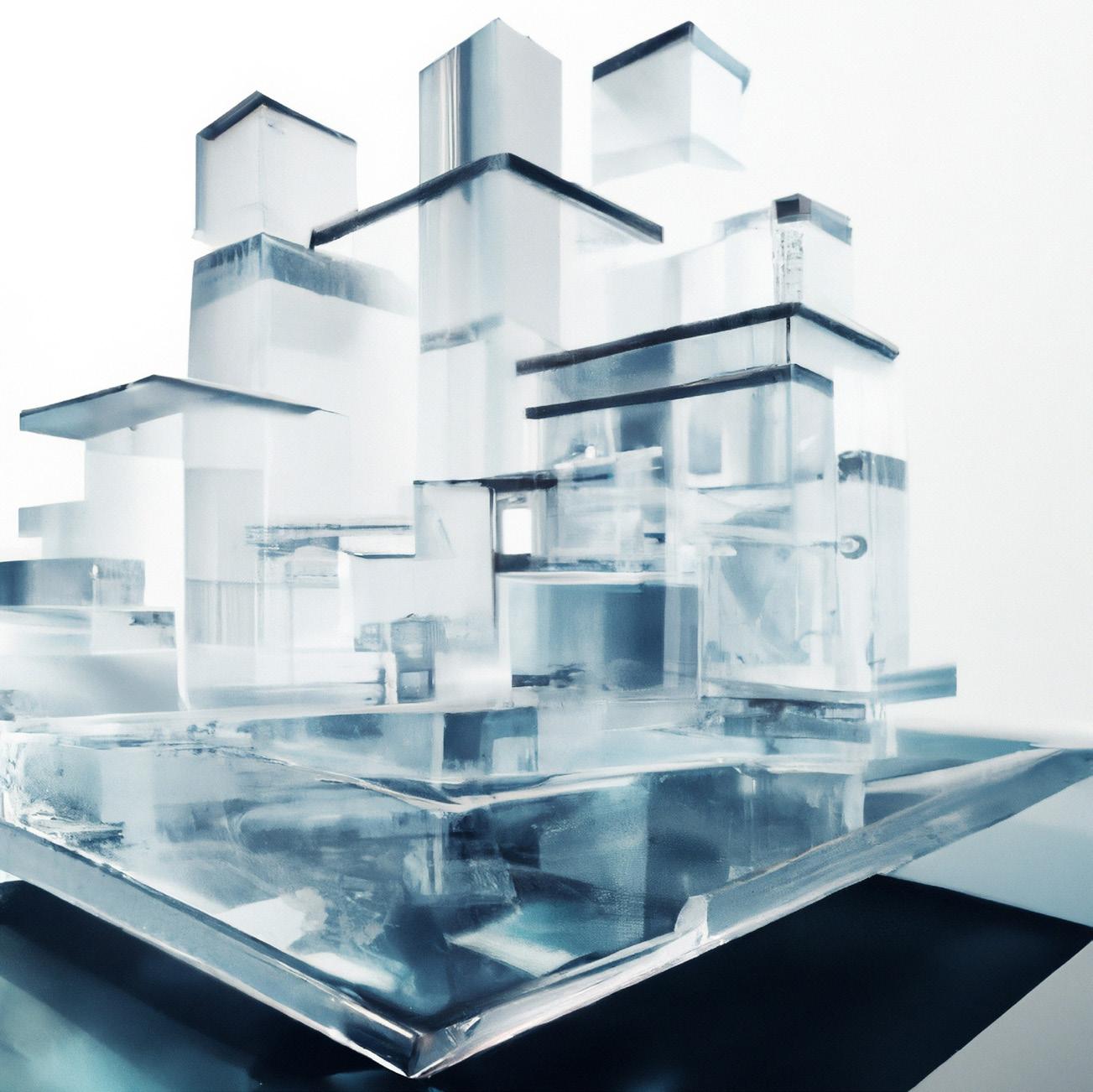
A great person attracts great people and knows how to hold them together.
Johann Wolfgang Von Goethe

Reawakens HONG KONG
After years of uncertainty, the city’s skyline is stirring again — with innovation, confidence and a renewed sense of purpose leading the way

For decades, Hong Kong’s skyline has stood as a symbol of ambition — a city built on resilience, precision and the eternal pursuit of opportunity. From the mist-covered peaks of Victoria Harbour to the glittering towers of Central, the city has always danced between East and West, tradition and modernity, calm and chaos. And now, after several challenging years of global upheaval and local recalibration, Hong Kong is rediscovering its rhythm. Its property market — long one of the most influential in the world — is stirring with new life.
For a city where every square metre has always told a story, the latest chapter feels particularly powerful. The pandemic years, the global economic headwinds, and the shifts in capital flows all forced Hong Kong to pause, to rethink its priorities. What has emerged from that pause is not decline but transformation. The city is entering a new cycle — one defined by long-term stability, lifestyle-driven design, sustainable development, and a deeper connection to the region around it. In short, Hong Kong is changing the way it thinks about property, and in doing so, it’s setting the stage for its next great boom.
Walk through neighbourhoods like West Kowloon, Kennedy Town or Wong Chuk Hang today and you can feel the momentum. Construction cranes rise again above the cityscape, and sales galleries are buzzing. After a period of hesitation, confidence is returning — not as speculative frenzy, but as a steady, measured revival grounded in fundamentals. Buyers, investors and developers are all adjusting to a new reality where value is not just about location or prestige, but about livability, connectivity, and experience.

Hong Kong has always been one of the world’s most expensive and tightly packed markets, yet what’s remarkable now is how creatively it’s evolving within those limits. Developers are rethinking vertical space, creating mixed-use towers that blend homes, offices, retail and recreation in a single seamless environment. Compact doesn’t mean compromised anymore; it means intelligent. From smart-apartment layouts that adapt to residents’ lifestyles to rooftop gardens that bring nature back into the urban core, Hong Kong is showing how density can coexist beautifully with design.
Behind this resurgence lies a combination of resilience and reinvention. The easing of pandemic restrictions, the reopening of borders, and the revival of tourism and finance have all injected new energy into the economy. Hong Kong’s position as a gateway to mainland China is once again proving its strength, with cross-border capital and talent flowing in through new initiatives and
partnerships. The city’s stock exchange has regained its global swagger, and international firms are expanding their footprints — all of which ripple directly into housing demand.
For developers, the current moment feels like a renaissance. After years of cautious launches, there’s a renewed appetite to innovate. Projects are getting greener, smarter and more lifestyle-oriented. Luxury towers in Mid-Levels and The Peak continue to capture global headlines, but the real story is unfolding in emerging neighbourhoods — revitalised industrial zones turned creative hubs, waterfront districts designed around culture and leisure, and suburban communities that offer balance and space. Developers are investing not just in buildings, but in experiences. They’re building wellness centers, coworking spaces, gardens and cycling paths — responding to a generation that values how they live as much as where.

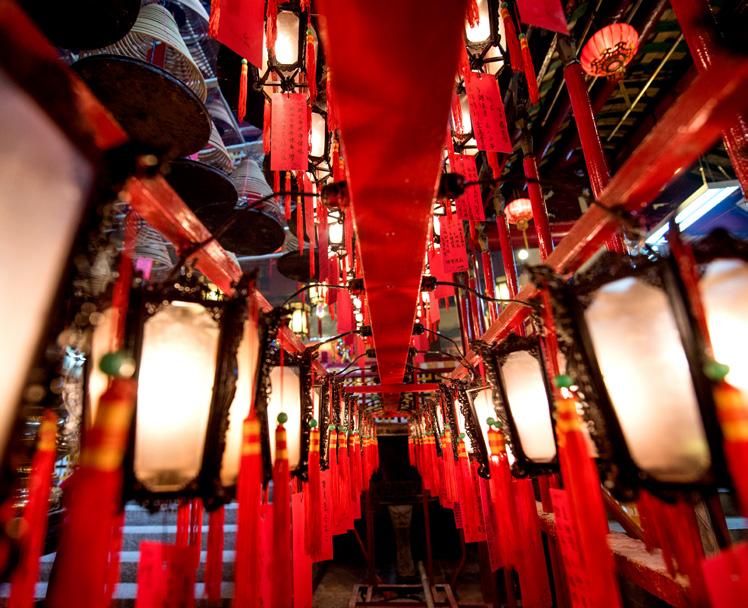
“For a city where every square metre has always told a story, the latest chapter feels particularly powerful.
The government’s role has been equally pivotal. Hong Kong’s leadership has made clear its commitment to stabilising the housing market while encouraging sustainable growth. Land supply has been expanded through reclamation and redevelopment, public housing initiatives are accelerating, and planning is increasingly geared toward long-term livability rather than shortterm speculation. Infrastructure investment continues apace: the Northern Metropolis project, linking the city’s north to Shenzhen, represents a monumental expansion of Hong Kong’s urban footprint and economic reach. This “twin-city” concept is already transforming the property landscape, opening new corridors for residential and commercial development that will define the next 20 years.
Investors are watching closely. After a period of adjustment, prices have stabilised, and yields in certain segments — particularly mid-tier apartments and suburban villas — have become more attractive. International buyers are reentering the market, drawn by favorable currency conditions and Hong Kong’s enduring status as a global financial hub. For local investors, property remains a deeply rooted form of wealth preservation and pride. The difference today is the mindset: this is not a speculative surge, but a strategic one, with buyers seeking homes that align with changing lifestyles, sustainability goals and family priorities.
Technology is also reshaping the sector in ways that few could have imagined a decade ago. Artificial intelligence, data analytics and smart construction systems are now embedded across the industry. Developers are using predictive modelling to assess design efficiency and sustainability impact. Agents are deploying AI-driven platforms to match buyers with properties more accurately. Even building management has become data-driven, with sensors and automation reducing energy waste and improving resident comfort. Hong Kong, always known for its precision and efficiency, is turning that same ethos toward the very fabric of its urban future.
At street level, you can feel the city’s new mood — cautious but confident, pragmatic yet creative. After the disruptions of the past few years, residents are more focused on quality of life than ever before. There’s growing demand for community-driven developments that integrate wellness, education and recreation. Families are drawn to new neighbourhoods in the New Territories, where modern design meets natural landscapes. Young professionals are flocking to reimagined districts like Wong Chuk Hang, where industrial warehouses have become stylish lofts and art studios. Every corner of the city seems to be finding its new identity.
Foreign investors, too, are rediscovering Hong Kong’s charm. For all its challenges, the city remains a financial and logistical powerhouse with world-class connectivity,

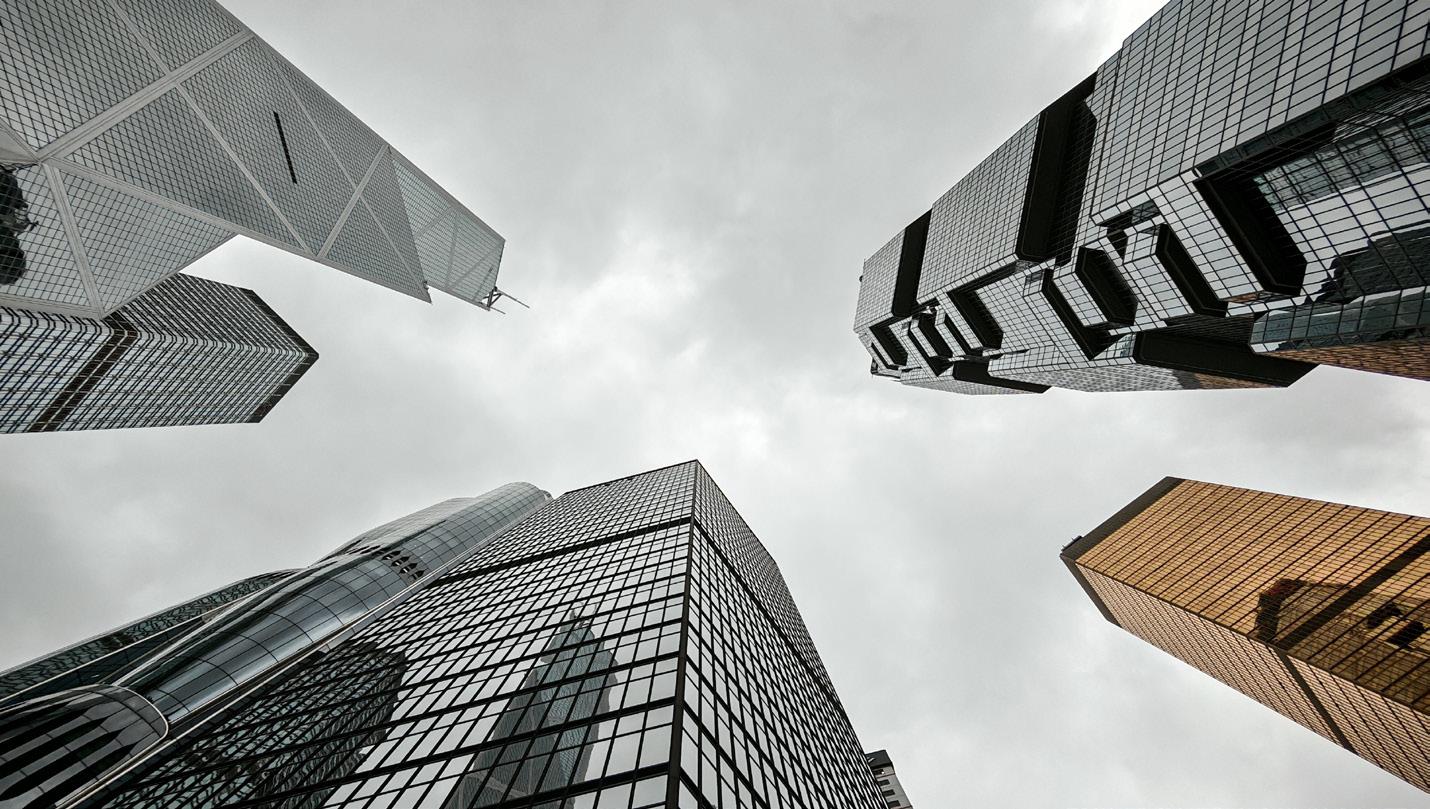
legal transparency and global appeal. Luxury property still carries an unmatched cachet here. The addresses of The Peak, Repulse Bay and Mount Nicholson are as desirable as ever, their prices sustained by rarity and prestige. But beneath that ultra-prime layer, the broader market is seeing healthier, more diversified activity. Mid-range residential developments are selling briskly, supported by local demand and improving sentiment. The office sector, too, is finding balance as hybrid work models redefine space usage and companies reconfigure their needs.
In many ways, Hong Kong is doing what it has always done best: adapting with speed and discipline. Its developers are leveraging lessons learned from the past cycle — avoiding oversupply, focusing on differentiation, and building with community in mind. Architects are experimenting with sustainability and human-centered design. Financial institutions are evolving their mortgage products to support a wider range of buyers. It’s a holistic renewal — not driven by hype, but by intent.
The psychological rebound is as important as the economic one. For many Hongkongers, property is more than an asset; it’s a cultural cornerstone. Owning a home represents stability, legacy and identity. When confidence returns to the property market, it often signals something larger — the renewal of optimism

itself. That optimism is visible again, not in the flash of record-breaking deals, but in the steady hum of open houses, the soft glow of tower lights at dusk, the quiet sense that the city’s pulse has quickened.
The global context also favors Hong Kong’s reemergence. As Asia reasserts itself as the world’s growth engine, the city remains the natural bridge between capital and opportunity. Mainland China’s Greater Bay Area vision — linking Hong Kong, Macau and nine Guangdong cities into a single innovation corridor — is accelerating. For investors, this creates a gravitational pull unlike any other. Properties in Hong Kong are not just local assets; they’re gateways to one of the most dynamic economic zones on Earth.
Luxury developers are responding accordingly. New projects are pushing design boundaries — from sky villas that feel like private sanctuaries above the harbour to heritage conversions that blend colonial charm with modern minimalism. Interiors are curated by global designers, lobbies resemble art galleries, and amenities rival five-star hotels. Yet beneath the glamour lies substance: sustainability certifications, smart home integration, and biophilic design are becoming standard rather than optional. The city’s elite developments are no longer competing on opulence alone, but on intelligence and integrity.

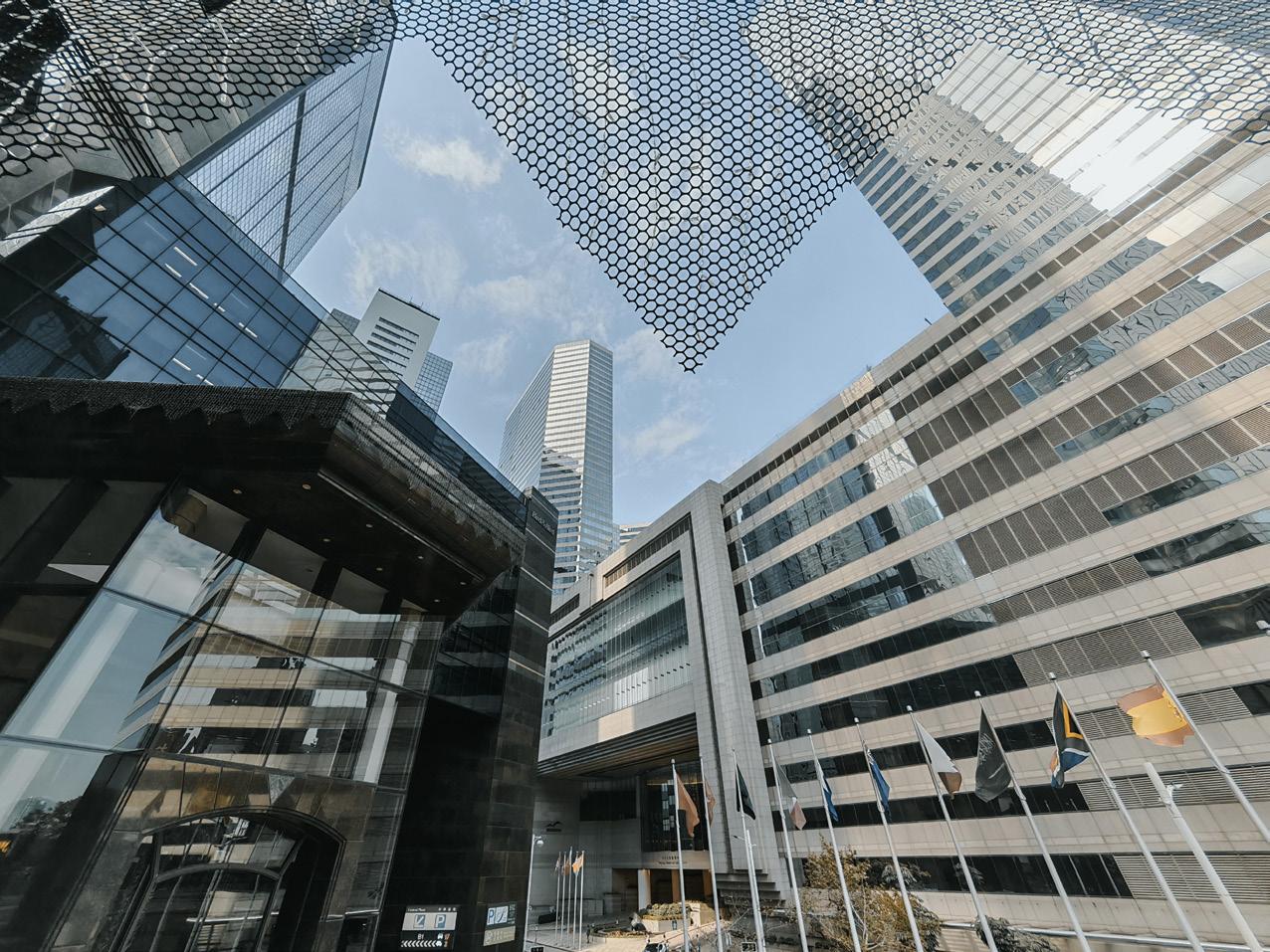



At the same time, public initiatives are ensuring inclusivity. Affordable housing projects, green building mandates and community engagement are central to Hong Kong’s vision for balanced growth. The goal is not just to build higher, but to build better — to create neighbourhoods where culture, commerce and community thrive together. This alignment between public policy and private ambition may be the most encouraging sign of all.
Looking ahead, analysts see a market poised for sustainable growth. Interest rates are stabilising, employment is strong, and infrastructure investments continue to support demand. The narrative has shifted from “recovery” to “renewal.” Hong Kong has weathered storms before — economic crises, global shocks, political transitions — and each time it has emerged leaner, smarter, more confident. The current cycle feels no different. It’s not a return to the frenzied boom of the past, but the beginning of something more mature: a property market built on balance, adaptability and foresight.
As the sun sets over Victoria Harbour, the city glows in reflection — towers catching gold, ferries gliding across the water, neon flickering back to life. It’s a scene familiar to anyone who has ever loved Hong Kong, yet it feels somehow renewed. The skyline that once symbolised endless ambition now carries a new meaning: endurance. The cranes, the lights, the hum of construction — they’re not signs of excess, but of energy. A city rebuilding itself, not because it must, but because it can.
Hong Kong’s property market is more than recovering; it’s reawakening. And in that reawakening lies a story that feels quintessentially Hong Kong — one of reinvention, resilience and quiet confidence. The city that taught the world how to build upwards is once again teaching it how to look forward. Because in Hong Kong, the skyline never stops moving — it only pauses to dream before it rises again.
“Hong Kong’s property market is more than recovering; it’s reawakening. And in that reawakening lies a story that feels quintessentially Hong Kong — one of reinvention, resilience and quiet confidence.
A ruler should be slow to punish and swift to reward.
Ovid


to Townhouses From
THE GCC’S LOVE AFFAIR WITH COMMUNITY LIVING

How the Gulf’s families, developers and investors are rediscovering the power of space, greenery and belonging
For decades, the skylines of the Gulf told a story of ambition. Cities like Dubai, Doha, Riyadh and Muscat reached upward with towers of glass and steel, symbols of progress and prosperity, the modern marvels that announced the region’s arrival on the global stage. But today, a quieter revolution is unfolding across the Gulf — not in the clouds, but closer to the ground. A new generation of homebuyers and developers are turning their gaze away from the high-rise horizon toward something more human: the community.
Across the GCC, sprawling master-planned neighbourhoods are rising — lined with leafy avenues, parks, playgrounds, and townhouses designed for families, not just investors. It’s a shift that’s reshaping the very rhythm of life in the region. Where once the measure of success was a penthouse with a skyline view, now it’s a morning walk past neighbors who know your name, a garden that catches the evening light, and a café around the corner where community feels effortless.
Drive through Dubai’s Arabian Ranches, Tilal Al Ghaf or The Valley, and the pattern is clear. The towers may still dominate the skyline, but life is happening at street level. In Riyadh, expansive developments like Diriyah Gate, Roshn’s Sedra community and the city’s growing ring of mixed-use residential projects are redefining Saudi family life. In Muscat, Al Mouj continues to expand its waterfront lifestyle, while in Doha, The Pearl has matured from a man-made island into a thriving neighbourhood of parks, cafés and homes that feel distinctly lived-in. Even smaller markets like Bahrain and Ras Al Khaimah are following suit, nurturing residential environments that prioritise serenity over spectacle.
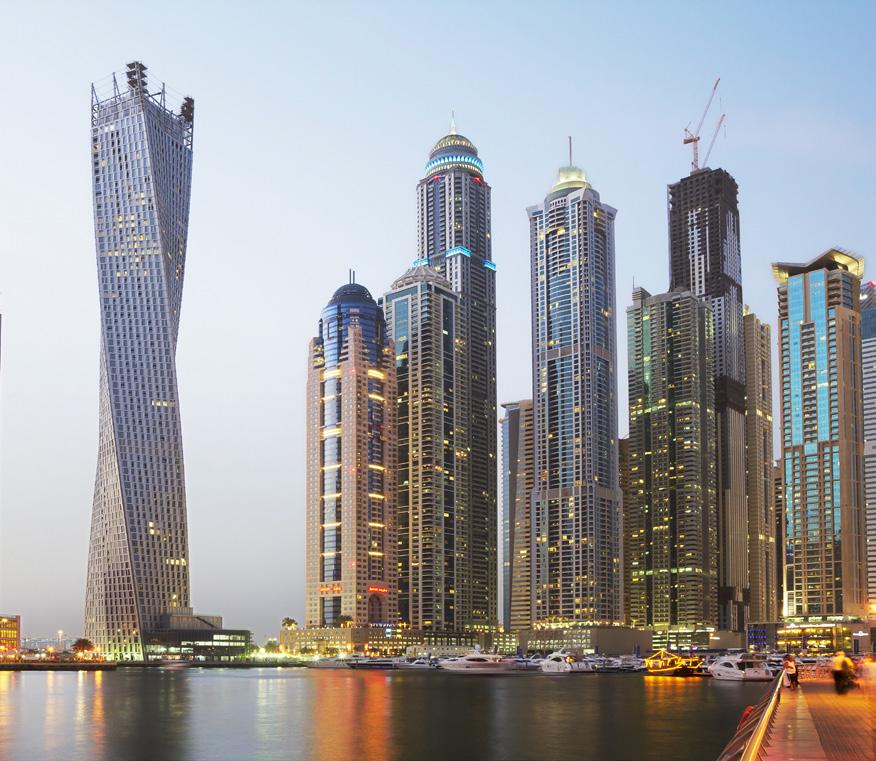

The reasons for this shift are as much emotional as economic. The pandemic accelerated a change that was already in motion: people began to crave space, nature, and meaningful connection. Work-from-home blurred the boundaries between living and working, making the home not just a place to sleep, but a sanctuary. Developers noticed — and responded. Across the Gulf, new masterplans are being designed not simply as collections of homes, but as ecosystems for wellbeing.
Today’s communities are deliberately crafted to feel organic, even within their precision. Streets are pedestrian-friendly, parks flow into pocket gardens, and every cluster of homes feels like a neighbourhood within a neighbourhood. The architecture


tells a story of modern Gulf living — clean lines, shaded courtyards, natural light, and sustainability at the core. Solar panels and energy-efficient materials are quietly replacing opulence as the new status symbols.
For families, these communities offer something that high-rise living often cannot: space to grow. Backyards for children, cycle paths for teenagers, and privacy without isolation. For developers, the appeal lies in longevity. Community-based living creates stability, recurring revenue, and long-term engagement. For investors, it represents a market that’s maturing — where demand is driven by lifestyle rather than speculation.
In Dubai, the success of villa communities has been extraordinary. Projects like Tilal Al Ghaf, with its central lagoon and green corridors, or Emaar’s The Valley, which blends nature with minimalist design, have sold at record speeds. Buyers are no longer just purchasing property; they’re buying into a way of life — one that feels calmer, more connected, more real. Even in a city built on ambition, the dream has evolved. The new luxury is space.
Saudi Arabia’s property market tells a parallel story. As Vision 2030 transforms the Kingdom’s urban landscape, new communities are emerging that reflect the values of family, heritage and progress. Roshn, a national real estate company backed by the Public Investment Fund, is leading
the charge with large-scale, mixed-use developments designed around walkability, greenery, and integrated amenities. These aren’t gated enclaves but open, accessible communities meant to foster belonging and civic pride. Diriyah Gate, with its blend of traditional Najdi architecture and modern design, is another example — a place where culture and community intertwine.
In Qatar, the legacy of the World Cup has catalysed a wave of residential innovation. Lusail City, built from the ground up with sustainability and livability in mind, is becoming a template for future urban planning. It’s not just a new city — it’s a lifestyle statement, where the balance between density and open space is carefully managed to promote wellbeing. Similarly, The Pearl, once a bold experiment in luxury waterfront living, has matured into a true community, complete with schools, parks and vibrant street life.
Oman, always prized for its natural beauty, has leaned into this new paradigm gracefully. Al Mouj Muscat, one of the region’s most acclaimed developments, combines beachfront villas with marina apartments and green spaces that echo the country’s serene rhythm. It’s a place where design feels both modern and rooted — contemporary architecture softened by local materials and landscape. As Oman continues to attract long-term residents and investors, this model of harmonious, low-rise, communitycentric living is proving remarkably resilient.
What unites all these projects is a shared recognition: the future of real estate in the GCC isn’t just vertical, it’s personal. It’s about creating environments where people feel grounded — connected to their homes, their neighbors, and their cities. Developers talk increasingly about “placemaking,” a term once reserved for urban theorists, now part of everyday planning meetings. Parks, schools, retail, healthcare, recreation — all are being woven into the design fabric from the beginning, not added as afterthoughts. The result is a new kind of urban tapestry, one designed to foster life, not just lifestyle.
For many, this shift also reflects a deeper cultural resonance. The Gulf’s traditional architecture — from wind towers to shaded courtyards — was always community-oriented. Neighbors gathered in shared spaces; families lived in clusters that balanced privacy and connection. The modern master-planned community, in many ways, is a contemporary echo of that heritage. The technology and materials have changed, but the essence is familiar: space, family, togetherness.
Investors, too, are recognising the strength of this evolution. Community living tends to generate steady rental demand and consistent capital appreciation. Properties in integrated developments hold value because they offer more than walls and windows — they offer lifestyle infrastructure. International investors who once looked only to city-center apartments are now drawn to suburban villa communities, viewing them as safe, family-friendly investments with strong end-user appeal.
At the same time, governments across the region are supporting this trend with infrastructure and policy. Improved highways, public transport networks, and green space initiatives are making once-distant suburbs feel connected. In Dubai, the expansion of roads like Al Qudra and Emirates Road has opened vast tracts of land for sustainable development. In Saudi Arabia, the scale of Vision 2030’s housing programs is transforming
accessibility and affordability. In Qatar, public realm projects are enhancing the quality of everyday life, bringing vibrancy to new districts.
Developers have also embraced the community as brand. Where once names like “tower” or “residences” dominated marketing, now the language is softer — “villages,” “neighbourhoods,” “parks.” The emphasis has shifted from product to place. Even the most luxurious projects now celebrate lifestyle before layout. Buyers are drawn to emotion as much as architecture — the promise of balance, belonging and beauty.
For residents, the change is tangible. Weekends in these communities feel different — less transactional, more personal. Farmers’ markets replace malls, kids cycle down shaded lanes, neighbors gather for yoga or coffee, and events turn strangers into friends. It’s a model of modern urban life that feels both global and deeply local — a place where the Gulf’s warmth and hospitality have found a new architectural form.
The psychological dimension of this shift cannot be overstated. In cities once defined by speed and scale, people are rediscovering the value of slowing down. The success of community living lies not in its amenities alone, but in its ability to create a sense of identity. When people feel rooted, they invest — not just financially, but emotionally. That emotional investment translates into care, stability, and continuity. In real estate terms, that’s the foundation of long-term value.
It’s tempting to view this as a post-pandemic correction — a reaction to years spent in confined apartments. But the truth runs deeper. The GCC’s maturing property markets have reached a point where success is no longer measured solely in spectacle. It’s measured in satisfaction, retention, and wellbeing. The rise of community living reflects a region coming of age — confident enough to prioritise comfort over competition, connection over congestion.

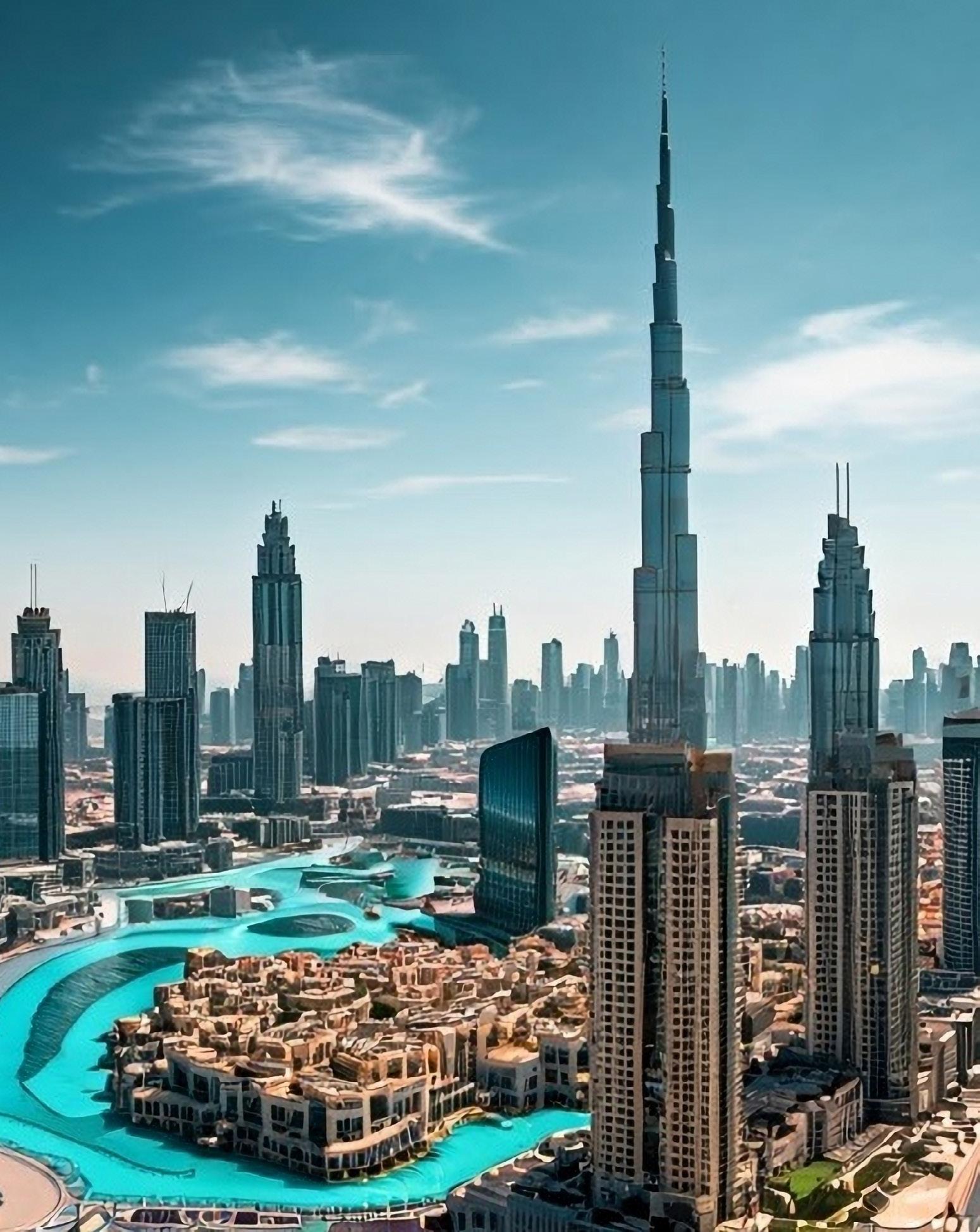
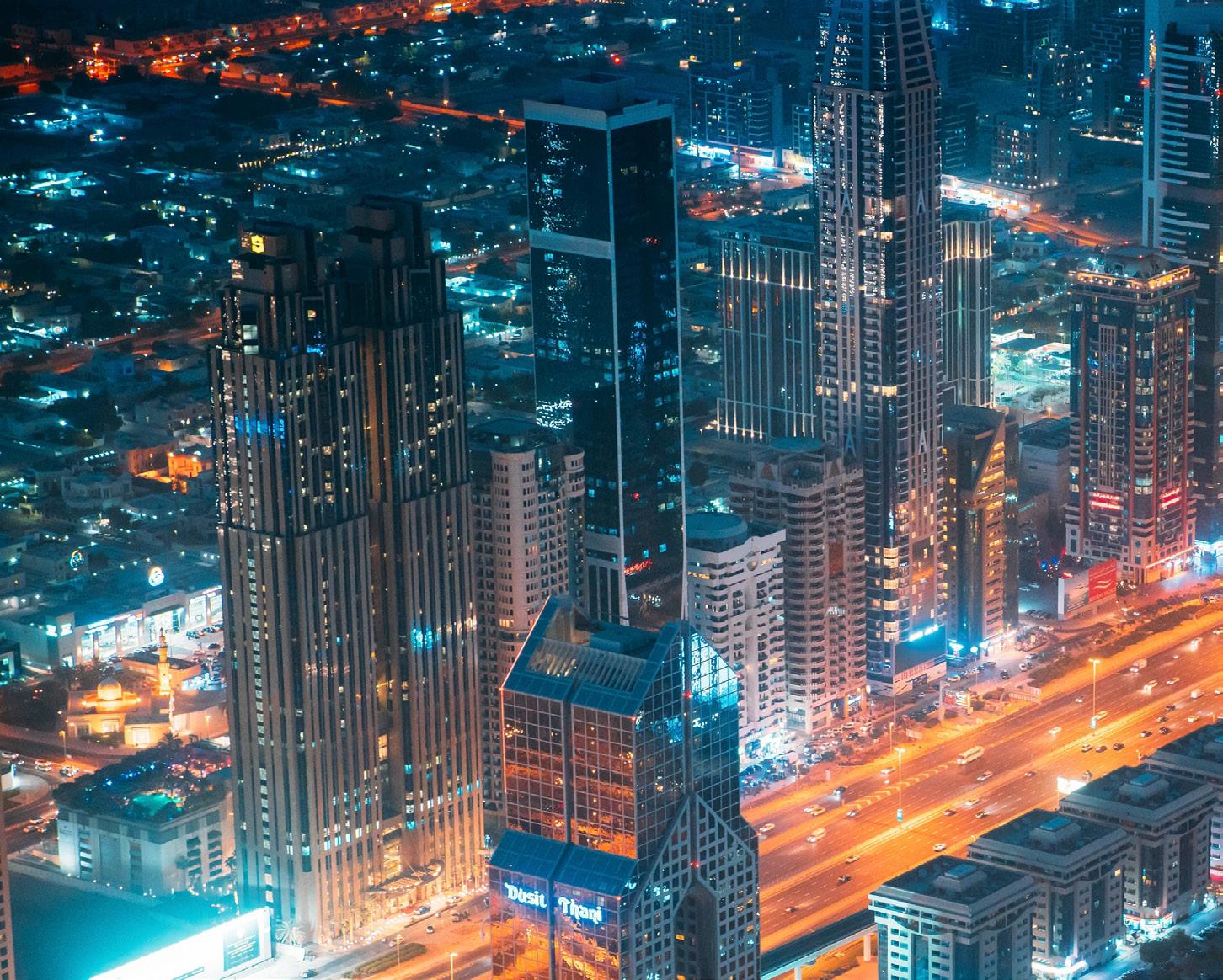
In the coming decade, this trend will likely define the region’s real estate identity. Mega-developments will continue to rise, but within them, the heartbeat will be human-scale. The ideal Gulf city of the future may still shimmer with towers, but its soul will live in its neighbourhoods — in tree-lined streets, shaded benches, and morning jogs along lakes and parks.
As twilight settles over Dubai’s desert edge or Riyadh’s expanding suburbs, the scene feels quietly profound. Children play under the golden light, neighbors chat at
community cafés, and the skyline glows softly in the distance — a reminder of where the Gulf has come from, and how far it has evolved. The region that once looked up to define its success has learned to look around — and in doing so, has rediscovered the joy of home.
Because in the end, real estate isn’t about the tallest tower or the grandest view. It’s about life between the walls — the laughter, the gardens, the shared spaces that make a city feel alive. And in the Gulf today, that spirit is flourishing — grounded, green, and beautifully connected.


There are three essentials to leadership: humility, clarity and courage.
Fuchan Yuan
Riyadh Metro fuels residential price growth
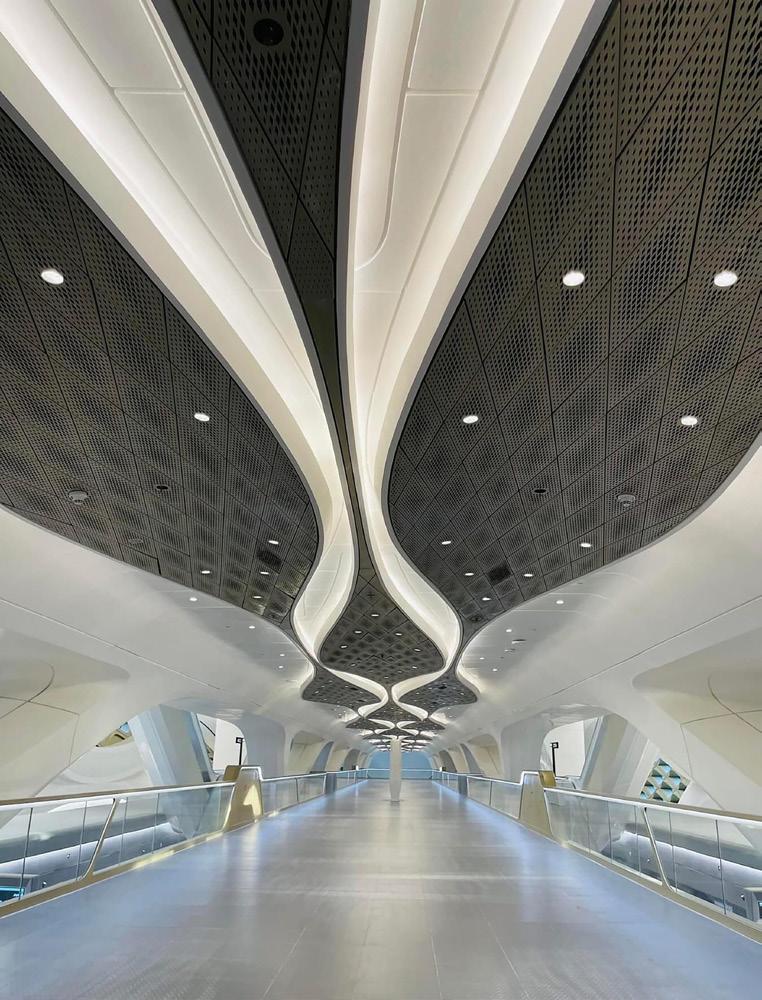
The positive impact of the opening of the Riyadh Metro on residential values in the Saudi capital has been revealed in a new white paper from global property consultancy Knight Frank, with some villas close to stations seeing uplifts of 78% on 2023 prices.
Delivered in an unprecedented single “big bang” launch, the Riyadh Metro represents a transformational milestone in the Kingdom’s Vision 2030 economic growth strategy. An immediate success, the six-line, 85-station network has transported more than 100 million passengers in its first nine months of operation, reflecting strong demand for enhanced connectivity.
Knight Frank estimates around 1.5 million of Riyadh’s 8.3 million residents live within a 15-minute walk of a metro station, equivalent to 18% of the city’s population. This is
a staggering proportion for a newly launched system, with nearly one in five Riyadh residents benefitting directly from enhanced accessibility from day one. For comparison, in Dubai approximately 13% of the population live within walking distance of the Dubai Metro.
Faisal Durrani, Partner – Head of Research, MENA at Knight Frank, said: “The opening of the Riyadh Metro is the starting point of the city’s urban transformation, not its conclusion. Designed to generate change rather than react to it, the system will reshape residential patterns, business locations and the lived experience of the city’s residents. As one of the flagship initiatives of Saudi Arabia’s Vision 2030, the metro is more than a transport project, it is a cornerstone of the Kingdom’s ambition to diversify the economy, enhance liveability and transform Riyadh into a global capital. Transport infrastructure is central to this vision, reducing car dependency, cutting emissions and enabling more sustainable patterns of growth.”
The three stations with the highest surrounding populations are Al Bat’ha, Al Wizarat and National Museum in central Riyadh. Each has around 50,000 residents living within 15 minutes’ walk.
To measure the property market’s response to the metro opening, Knight Frank compared villa prices in three districts with differing characteristics: Tuwaiq, Al Yarmuk and Al Malqa. In each case, homes located within a 15-minute walk of a metro station were benchmarked against those further away.
The direct impact on villa prices is already visible, with the research showing clear evidence of a metro premium. In Tuwaiq, the value of homes near the station rose by 20% between Q2 2023 and Q2 2025, compared with 10% growth further away. In Al Yarmuk, the effect was especially pronounced, with prices near the metro surging by 78%, versus 22% in more peripheral areas. Even in Al Malqa, one of Riyadh’s most established districts, values near the metro have climbed by 20%.
Durrani added, “Proximity to metro stations is also having a direct impact on apartment values. For instance, prices for apartments close to a station are, on average, SAR 96 psm higher than for an equivalent apartment just 500 m further
Image courtesy of Ali Lajami
away. In fact, our analysis shows that for every additional metre closer to a station an apartment is, the price rises by SAR 0.19 psm. This means that for two otherwise identical 250 sqm apartments, the one located 500m closer to the metro station will, on average, be valued at SAR 24,000 more”.
Harmen de Jong, Regional Partner - Head of Consulting, MENA at Knight Frank, said: “These results confirm that Riyadh Metro accessibility is already influencing home values. The direct correlation between house prices and proximity to metro stations that we found is consistent with the effect seen in other major cities around the world, reinforcing the conclusion that metro accessibility is a key determinant of real estate value. In Riyadh, where the metro is newly operational, the scale and significance of the effect underlines its role as a key driver of residential demand and home values, which over time is likely to intensify further as metro usage becomes more widespread and embedded in the cultural fabric of the city.”
For residents, the metro means shorter commutes and potentially broader housing choices; for businesses, it could lead to enhanced labor mobility; and for developers, it opens new development corridors. It also supports the Vision 2030 Quality of Life Programme, promoting denser, mixed-use and more sustainable urban communities while bringing congestion relief and environmental benefits. By drawing residents closer to stations and shifting trips from cars to trains, current projections suggest the metro will eliminate around 250,000 car trips and save 400,000 litres of fuel per day, reinforcing its role in sustainable urban mobility.
Looking ahead, expansion plans, including the 65km Line 7 corridor linking Qiddiya, King Salman Park, Diriyah Gate, New Murabba and King Khalid International Airport, will extend these accessibility and sustainability benefits further, unlocking new areas for development.
NEW DEVELOPMENT OPPORTUNITIES
For developers and investors, the Metro network creates opportunities for placemaking in the immediate vicinity of the new stations and could unlock new land parcels that may have previously been considered too remote.
de Jong, continued: “Transit-oriented development (TOD) principles suggest that transit infrastructure achieves maximum impact when paired with planning for mixeduse, walkable, higher-density development around stations. Creating vibrant, pedestrian-friendly “station precincts” with integrated retail, residential and office space tends to further increase the desirability of these locations”. While Riyadh’s urban form has historically been low-density and car-centric, the introduction of the metro alongside supportive land-use changes, such as upzoning around stations, could produce similar TOD dynamics: higher foot
traffic supporting retail, new housing projects clustered around stations, and a shift in preferences toward transitserved neighbourhoods.
These effects could also eventually extend to neighbourhoods not in direct proximity to a station. The metro cannot operate in isolation; to fully unlock its value, it must be supported by reliable feeder modes such as buses and improved pedestrian networks. Recent bus passenger data underlines this interdependence. Nationally, buses served 23 million passengers in Q1 2025 – a 34% increase compared to the fourth quarter of 2024. And while in the second quarter of the year country-wide bus passenger volumes decreased by 7% from the first quarter, in Riyadh they continued to grow – rising from 15 million to 15.6 million.
de Jong concluded: “The metro’s long-term success will be reinforced by transit-oriented development and the growing integration with buses and other last-mile solutions. Moreover, the metro’s evident success further supports expansion plans, including the Line 2 extension to Diriyah and the planned Line 7, linking Qiddiya, King Salman Park, Diriyah Gate, New Murabba and King Khaled International Airport.
“Exemplifying the Kingdom’s bold Vision 2030 goals, the Riyadh Metro is both a landmark infrastructure achievement and a strategic economic lever, embedding accessibility at the heart of Riyadh’s transformation.”

Emaar Unveils Dubai Mansions at Emaar Hills, a AED 100 Billion Community of 40,000 Ultra-Luxury Homes
The city’s most exquisitely planned enclave, where every facet of life is curated for leisure, refinement, and wellbeing.
Walking distance from Dubai Hills Estate and just a stroll from Dubai Hills Mall, Dubai Mansions is set to rise within Emaar Hills, the city’s newest and most prestigious master-planned community. Developed with a total value of AED 100 billion and comprising 40,000 ultra-luxury residences, Emaar Hills redefines urban sophistication and contemporary living in Dubai.
Every element of Dubai Mansions has been crafted to embody elegance, indulgence, and convenience, offering residents a lifestyle where daily living feels effortless, enriching, and inspiring. The project features a limited collection of ultra-luxury mansions ranging from 10,000 to 20,000 square feet, each reflecting timeless architectural sophistication and world-class interior design. Expansive plots, grand façades, and immersive landscapes are complemented by bespoke amenities to create an address that fuses legacy with innovation.
Emaar Hills, located adjacent to Dubai Hills Estate, has been envisioned as a vibrant new district that integrates nature, wellness, and connectivity. Residents will enjoy
direct access to a championship golf course, wellness and leisure facilities, premium retail destinations, and a network of landscaped parks that promote balance and community.
Beyond its architectural distinction, Emaar Hills is designed as both a lifestyle and investment destination. Its strategic location, world-class amenities, and masterplanned connectivity position it as one of Dubai’s most desirable addresses for discerning homeowners and global investors seeking long-term value in the city’s luxury real estate market.
Mohamed Alabbar, Founder of Emaar, said: “Dubai Mansions in Emaar Hills represents the ultimate expression of refined living. Every residence, every garden, and every pathway reflects an uncompromising attention to detail, creating a setting that embodies harmony, prestige, and a lifestyle that is unmatched anywhere in the world.”
From architecturally distinguished homes to immersive landscapes and world-class recreation, Dubai Mansions stands as the crown jewel of Emaar Hills, representing the pinnacle of luxury living within a landmark community designed to inspire generations.

Ellington Properties Awards AED 1 Billion+ Construction Contract to China Railway 18th Bureau Group
Mercer House, Ellington Properties’ acclaimed residential project in Uptown Dubai and winner of the prestigious International Property Award for Best MixedUseDevelopment, has taken a major step forward with the signing of an AED 1 billion+ construction contract with China Railway 18th Bureau Group.
This milestone cements Mercer House’s position as one of the most ambitious and design-forward developments in Dubai’s real estatelandscape. The project reflects Ellington’s commitment to curating residences that blend architectural excellence, wellness, and a meaningful lifestyle.
Comprising two towers – a 34-storey North Tower and a 41-storey South Tower – Mercer House offers a refined mix of studio, 1-, 2-, and 3-bedroom apartments, as well as signature 4-bedroom penthouses. Its distinctive design and intuitive spaces are crafted to appeal to discerning homeowners and investors seeking more than just a residence.
Complementing the residential towers, Uptown Plaza will introduce a vibrant retail and dining destination. Featuring a curated selection of boutiques, cafés, and lifestyle concepts, the plaza is designed as an open, walkable environment that enhances daily living and fosters a sense of urban connection at the heart of Uptown Dubai.
Ahmed Bin Sulayem, Executive Chairman and Chief Executive Officer, DMCC, said: “Demand for integrated, high-quality communities is higher than ever, particularly in prime locations such as Uptown Dubai. With Mercer House, we are meeting this head-on by delivering a refined and vibrant residential experience. This includes two elegant towers featuring world-class amenities, premium retail and food and beverage offerings, and award-winning design. Our partner Ellington’s onboarding of China Railway 18th Bureau Group, one of the world’s foremost engineering firms for large-scale urban infrastructure, reflects the high standards being set as we continue to elevate Uptown Dubai’s appeal and bolster the city’s position as a global leader in urban living and competitiveness.”
Zhou Lin, General Manager of China Railway 18th Bureau Group, said: ‘’We are honored to be awarded the AED 1 billion+ construction contract for Mercer House, Ellington Properties’ outstanding residential development in Uptown Dubai. This collaboration reflects the trust placed in our engineering excellence and proven track record of delivering large-scale projects worldwide. With our unwavering commitment to detail, quality, and timely delivery, we
look forward to bringing Mercer House to life and further strengthening our role as a reliable and prestigious main contractor in Dubai’s vibrant construction sector.”
Joseph Thomas, Co-Founder of Ellington Properties, commented: “Mercer House marks a key milestone for Ellington in one of Dubai’s most dynamic destinations –Uptown Dubai, developed by DMCC. Our partnership with China Railway 18th Bureau Group, a globally respected contractor, reinforces our commitment to delivering excellence through world-class execution and design. Together, we are shaping a residential landmark that reflects the energy of the district and the aspirations of discerning homeowners and investors alike.”
The collaboration with China Railway 18th Bureau Group, known globally for its engineering excellence and successful delivery of large-scale infrastructure and urban projects, ensures Mercer House will be realised with uncompromising attention to detail.
The development offers a curated range of lifestyle amenities, including an urban beach club, wellness-focused fitness and recovery zones, a multi-sports hall, family and kids’ recreational areas, a modern clubhouse, and elegantly designed communal spaces.
Mercer House is not only a significant addition to Ellington’s growing portfolio of landmark projects, but it also represents a powerful alignment with Dubai’s vision for vibrant, integrated communities that combine innovation, lifestyle, and long-term value.

Binghatti Leads the Market in 2025 Year-todate Handovers and Unit Sales
Binghatti Holding Ltd. (“Binghatti Holding”), one of the UAE’s fastest-growing real estatedevelopers, announced strong year-to-date sales performance and the successful launch of multiple high-value developments across Dubai, making the company the top seller of residential units in the Emirate by volume.
Binghatti sold nearly 12,000 residential units across its portfolio year-to-date in 2025, making it the leading real estatedeveloper by number of units sold in the sub-AED 2 million segment, according to DXB Interact, a Dubai real estate data aggregator.
Year-to-date, Binghatti has also launched 13 new projects with a combined Gross Development Value (GDV) of approximately AED 12.28 billion (USD 3.3 billion). Collectively, these projects comprise more than 8,200 residential units and a sellable area exceeding 6.2 million square feet. The seven developments completed during the same period account for more than 20% of all new project completions in Dubai year to date, according to Property Monitor data.
Binghatti Holding unveiled on July 25 its latest landmark development, Flare 01 and Flare 02, two architecturally distinct residential towers in the heart of Jumeirah Village Triangle. About 95% of the units were sold within the first 90 days of high-profile simultaneous launch events in Egypt and Dubai. Flare 01 boasts 844 units across a total sellable area of 746,386 sq. ft. and a Gross Development Value (GDV) of AED 1.24 billion. Meanwhile, Flare 02 features 613 units with a sellable area of 539,812 sq. ft. and a GDV of AED 915 million.
Muhammad BinGhatti, Chairman of Binghatti Holding, commented:
“Binghatti’s position as the market leader for sales volume transactions year to date reflects the success and trust within our vertically integrated business model, which has allowed us to become one of the most agile market players and deliver projects within record timelines. The market’s enthusiastic response to our flagship projects including Binghatti Flare 01 and Flare 02 highlights both our financial stability and our ability to deliver consistent value across a broad array of segments. As demand accelerates in the AED 1 million to AED 3 million property range, where most of our developments are concentrated, we are strategically positioned to capture sustained growth and deliver long-term returns to our stakeholders.”
Binghatti’s AED 80 billion development portfolio currently includes around 38,000 units under development across 38+ projects in prime Dubai locations, including Downtown, Business Bay, Jumeirah Village Circle, and Meydan, as well as flagship branded residences developed in collaboration with luxury partners Bugatti, Mercedes-Benz, and Jacob & Co.
The company’s development pipeline was further reinforced by the recent acquisition of 8.2 million sq. ft. mega plot in Nad Al Sheba 1, which will host Binghatti’s first masterplanned community, with a projected development value exceeding AED 25 billion.
Binghatti’s H1 2025 net profit more than tripled to AED 1.82 billion, driven by sustained demand for Dubai real estate. The Group’s total sales reached AED 8.8 billion, with revenue rising 189% year-on-year to AED 6.3 billion.


PALM JEBEL ALI: DUBAI’S NEW GLOBAL ICON IN THE MAKING
A FIRST-HAND REFLECTION ON WHY THIS WATERFRONT REVIVAL IS SET TO REDEFINE LUXURY AND INVESTMENT IN DUBAI
As someone who has watched Dubai’s skyline evolve for decades, I can’t recall a single project that has stirred as much optimism as Palm Jebel Ali. From the moment I first glimpsed the master plan for this bold waterfront development, I sensed something monumental was unfolding — not just a new address, but a global icon in the making. Today I am more convinced than ever that Palm Jebel Ali represents a generational investment opportunity.
When Nakheel recently launched its new waterfront villas at Palm Jebel Ali — eleven distinct architectural styles across The Beach and The Coral Collections — the signal was loud and clear: this is luxury coastal living reimagined. Floor-to-ceiling windows, direct beachfront access, and sweeping Arabian Gulf views are not mere extras here, they are the baseline. The villas, ranging from 7,500 to 12,500 square feet, offer something genuinely special for homeowners and investors alike.
But beyond the homes themselves, what excites me most is the broader vision. Palm Jebel Ali spans seven islands, covers more than 13 kilometers of shoreline, and encompasses 16 fronds with over 90 kilometers of pristine beachfront. It’s not just a place to live — it’s a destination, a landmark. The project aligns with Dubai’s 2040 Urban Master Plan, embraces smartcity technologies and sustainability, and is designed to be both pedestrian-friendly and future-ready.
For investors, the implications are compelling. This is a location that is simultaneously exclusive and forward-looking — luxury villas in a globally recognized city, in a development engineered to become a magnet for highnet-worth individuals. Add to that the infrastructure: retail promenades, a striking modern mosque designed by world-class architects, and a community master-planned to inspire both residents and visitors.

Personally, I believe now is the moment to act. Many have grown comfortable with the classics — Palm Jumeirah, Dubai Marina — but the next frontier is clearly Palm Jebel Ali. It offers the prestige of waterfront living with the promise of long-term growth as Dubai’s next luxury corridor takes shape.
If you ask me, Palm Jebel Ali isn’t just a real-estate opportunity. It’s a statement — and I’m proud to be watching it from the front row.
Anil Bhoyrul

REAL ESTATE
LEADERS
CEO Wissam Younane wissam@bncpublishing.net
MANAGING DIRECTOR Rabih Najm rabih@bncpublishing.net
EDITOR IN CHIEF Anil Bhoyrul anil@bncpublishing.net
MANAGING EDITOR Tamara Pupic tamara@bncpublishing.net
FEATURES EDITOR Aalia Mehreen Ahmed aalia@bncpublishing.net
DIRECTOR OF INNOVATION
Sarah Saddouk sarah@bncpublishing.net
GROUP SALES DIRECTOR – B2B GROUP
Joaquim D’Costa jo@bncpublishing.net
HEAD OF PARTNERSHIPS
Samir Glor Samir@bncpublishing.net
COMMERCIAL LEAD
Anna Chipala anna@bncpublishing.net
CREATIVE LEAD Christian Harb chriss@bncpublishing.net
SUBSCRIBE
Contact subscriptions@bncpublishing.net to receive Entrepreneur Middle East every issue
COMMERCIAL ENQUIRIES sales@bncpublishing.net
ENTREPRENEUR.COM
Access fresh content daily on our website
EntMagazineME Entrepreneur-me
All Rights Reserved 2025. Opinions expressed are solely those of the contributors. Entrepreneur Middle East and all subsidiary publications in the MENA region are officially licensed exclusively to BNC Publishing in the MENA region by Entrepreneur Media Inc. No part of this magazine may be reproduced or transmitted in any form or by any means without written permission of the publisher. Images used in Entrepreneur Middle East are credited when necessary. Attributed use of copyrighted images with permission. All images not credited otherwise Shutterstock. Printed by United Printing and Publishing. PO BOX 502511 DUBAI, UAE P +971 4 4200 506
ANANTARA SHARJAH RESIDENCES
A NEW CHAPTER OF LUXURY EXPERIENCES BY THE SEA

Bringing luxury seaside living to Sharjah for the first time, owners at the Anantara Sharjah Residences enjoy access to the Anantara Sharjah Resort’s world-class amenities, including an infinity pool, five distinctive restaurants, an Anantara Spa and a state-of-the-art gym.
As an investment, owners can enjoy the benefits of a rental management scheme operated by Anantara Hotels, Resorts & Spas, allowing them to maximize their returns when they are not resident in the property.
To register your interest, visit arada.com
LIFE IS A JOURNEY.


